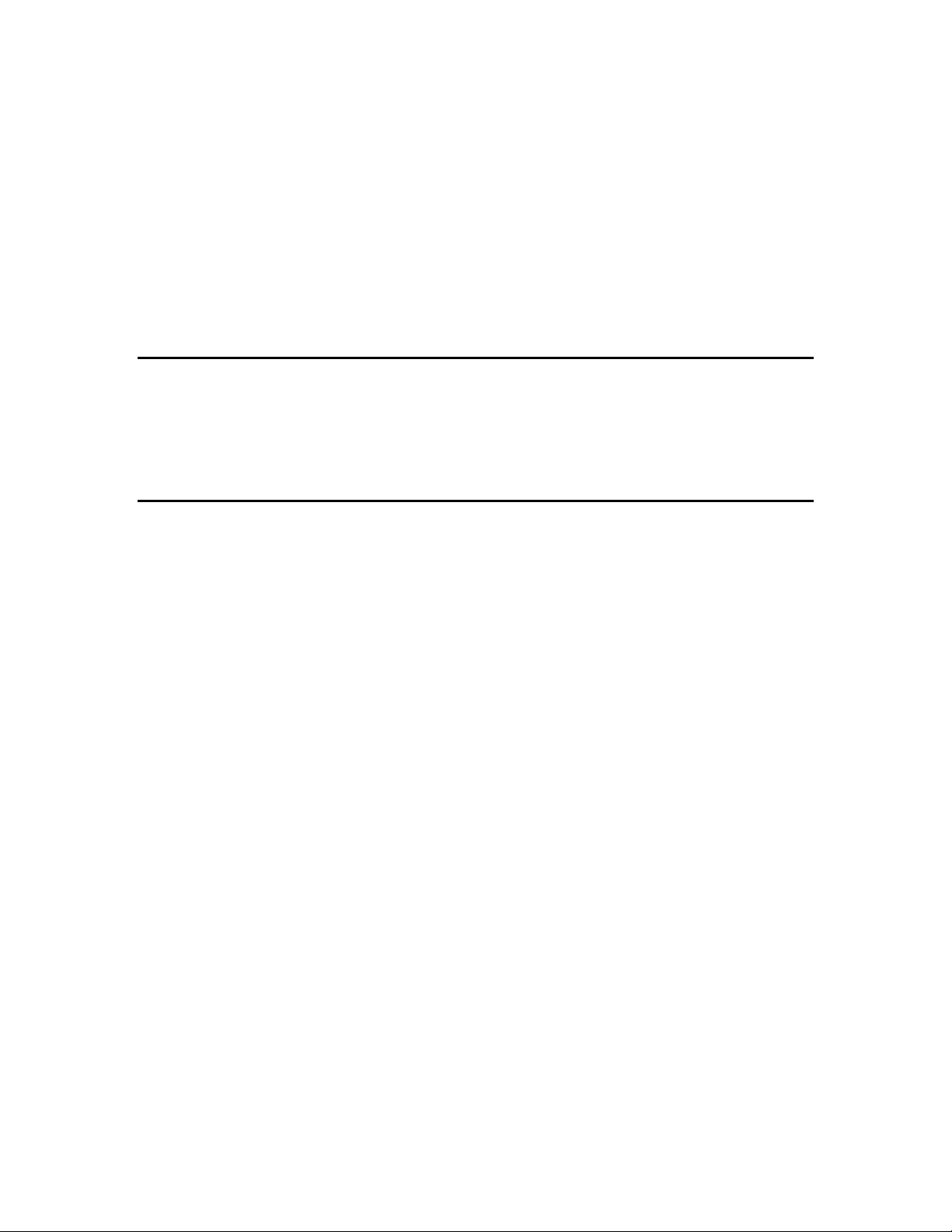
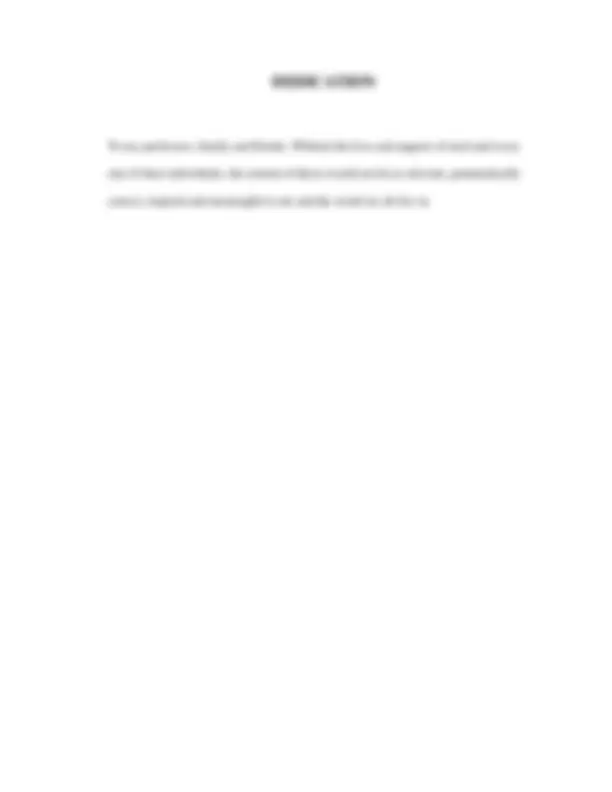

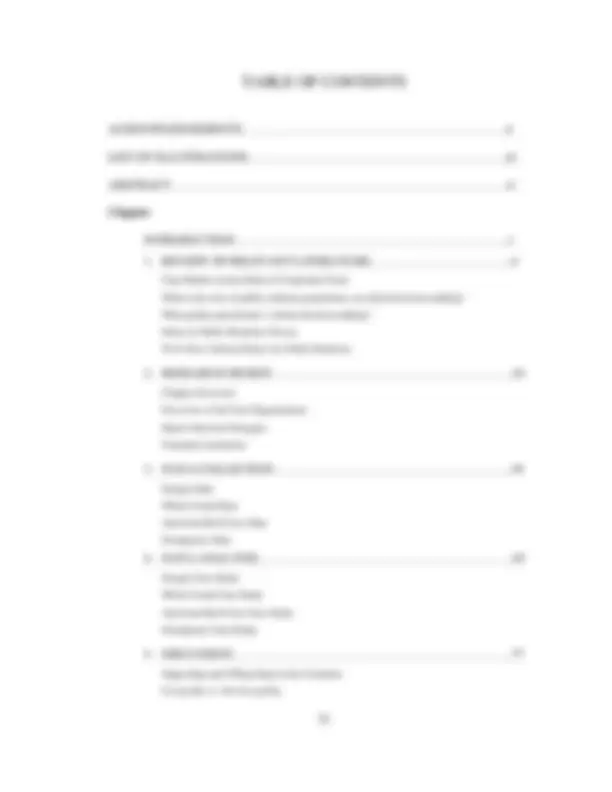
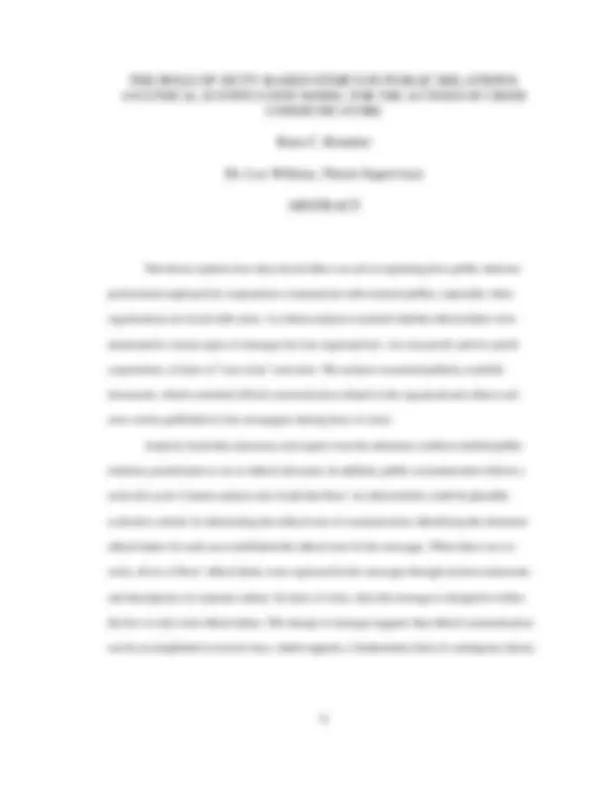
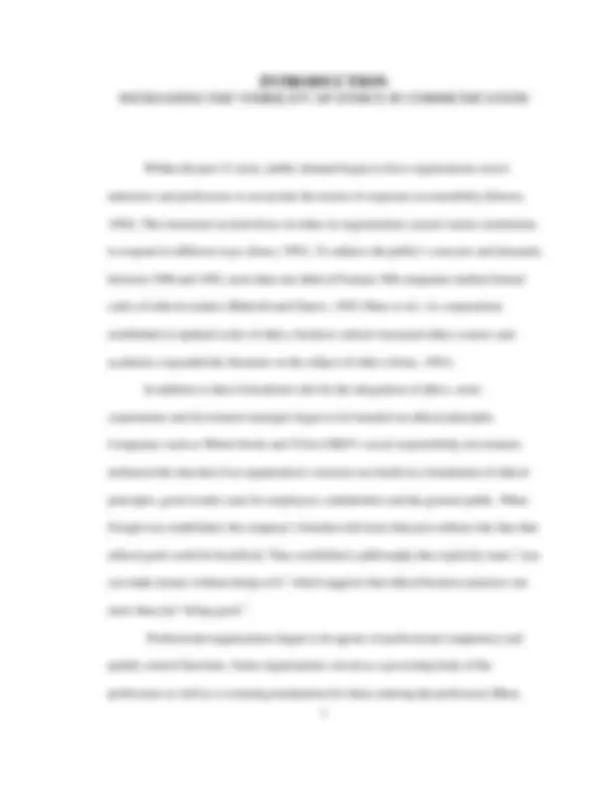
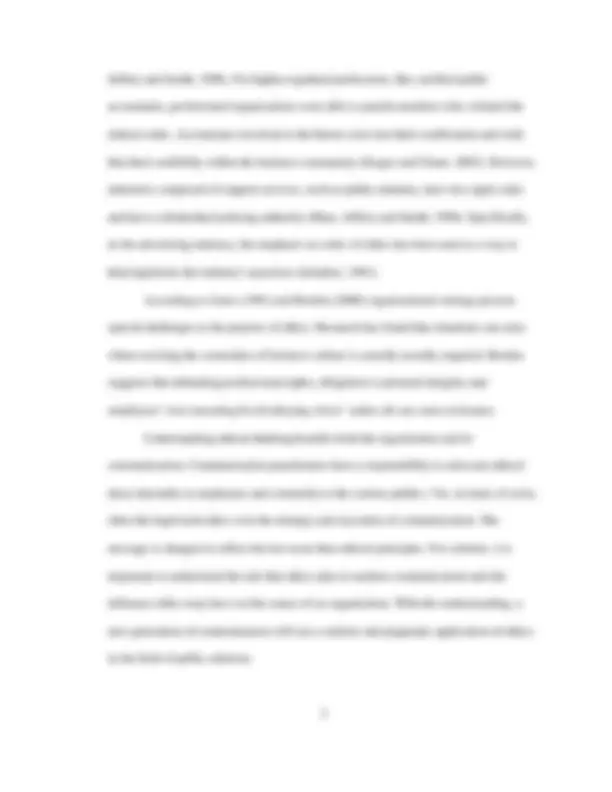
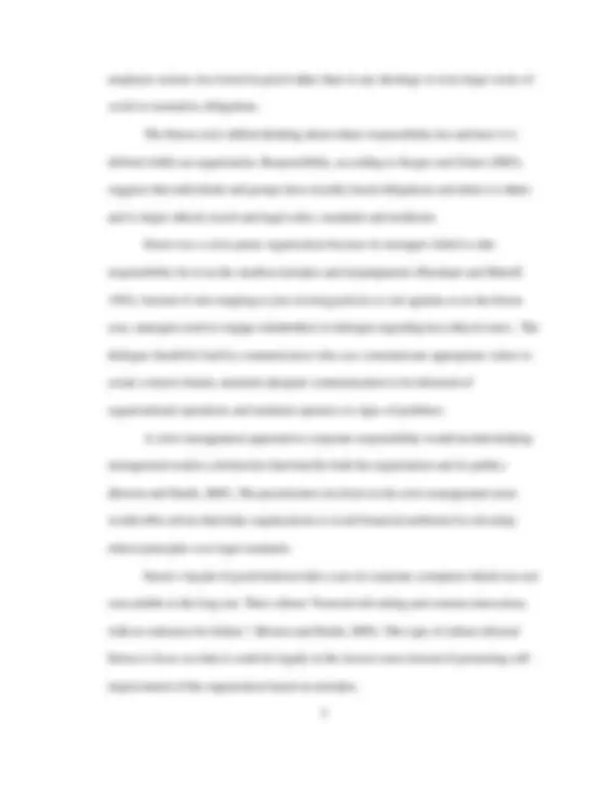
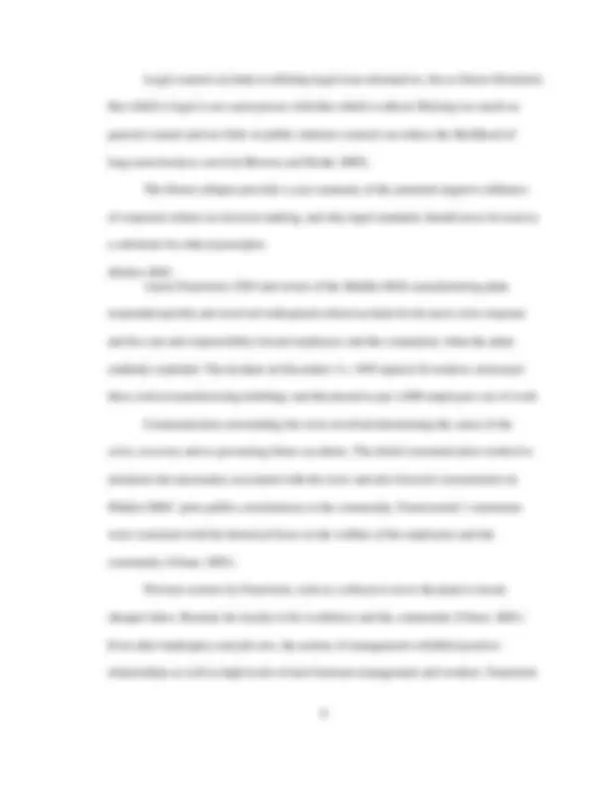
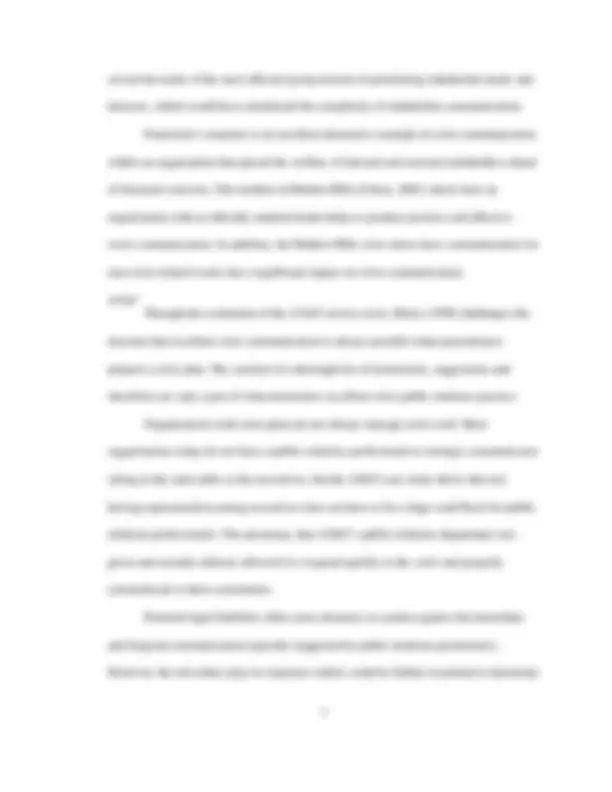
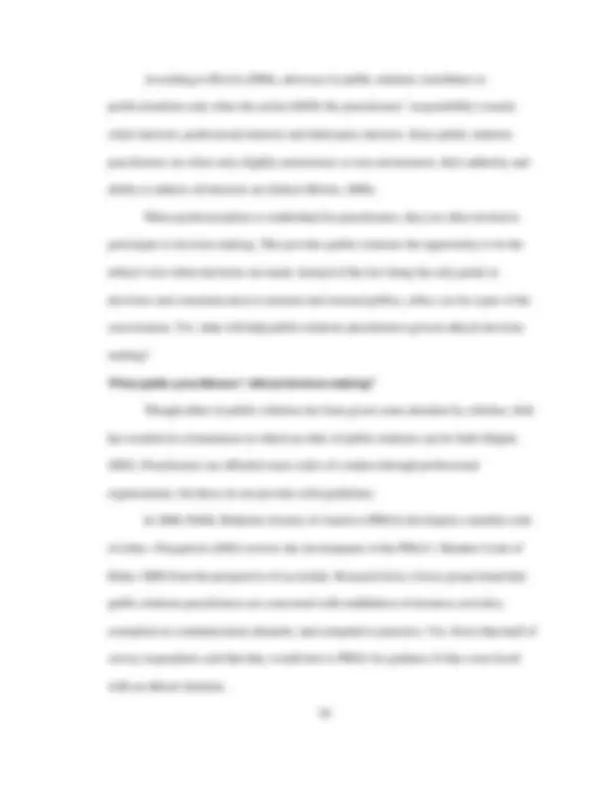
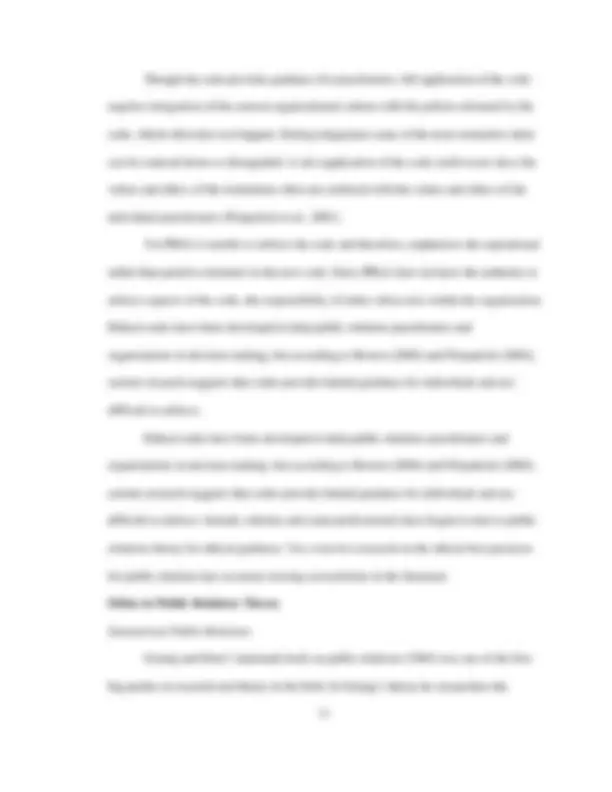
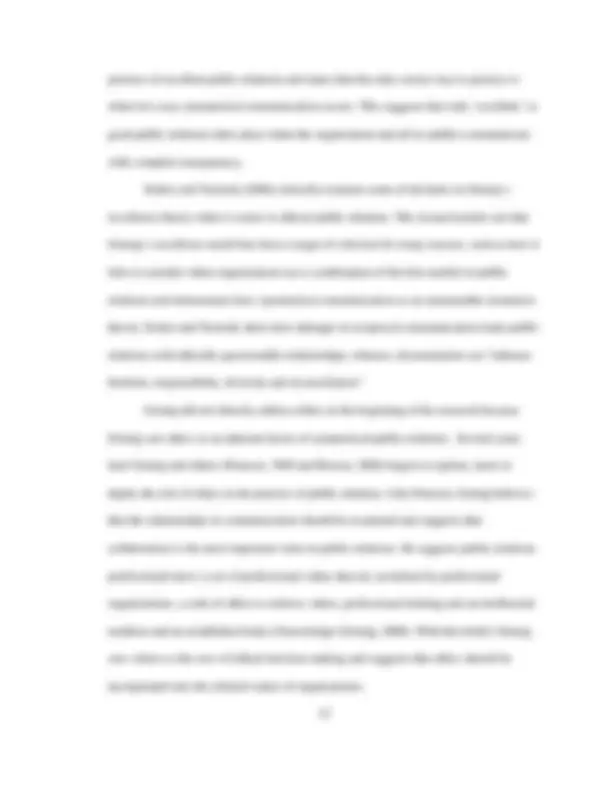
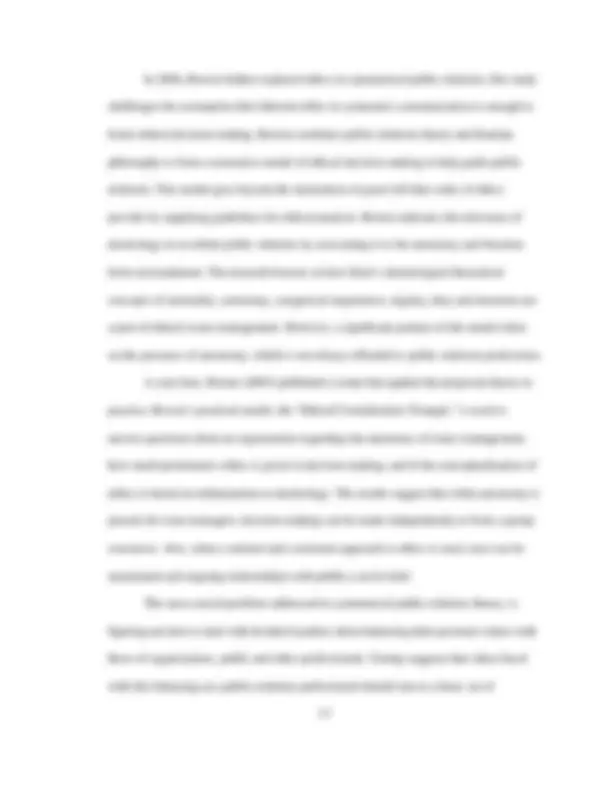
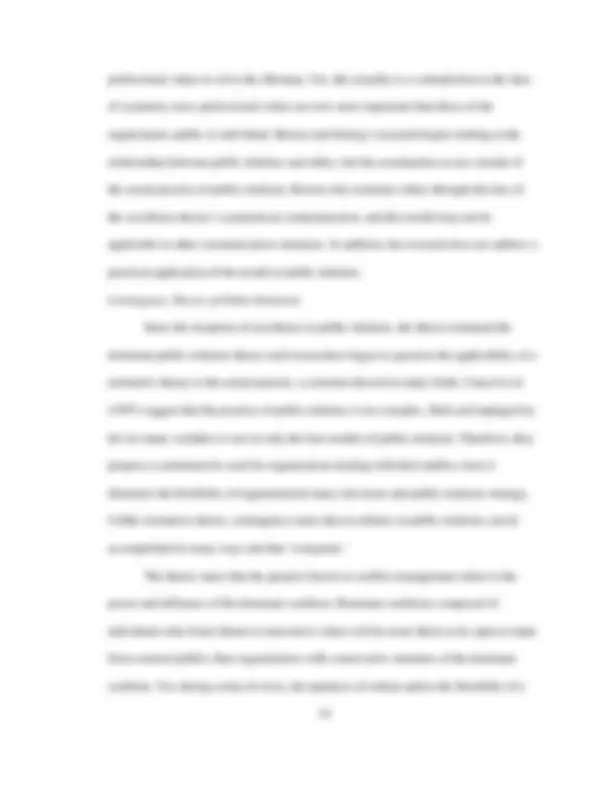
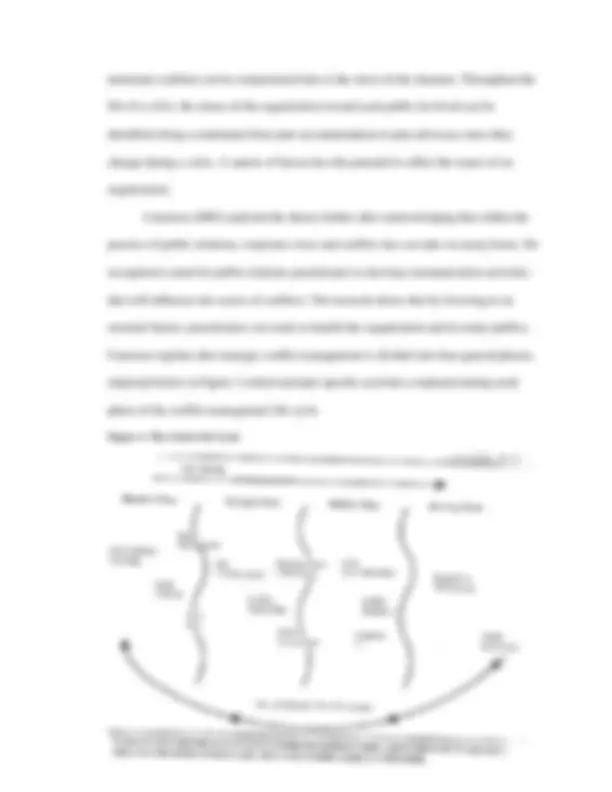
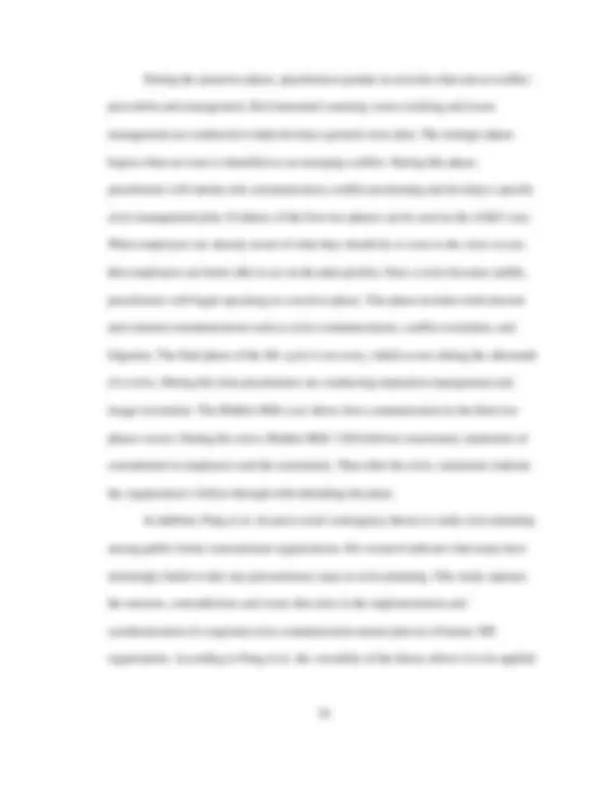
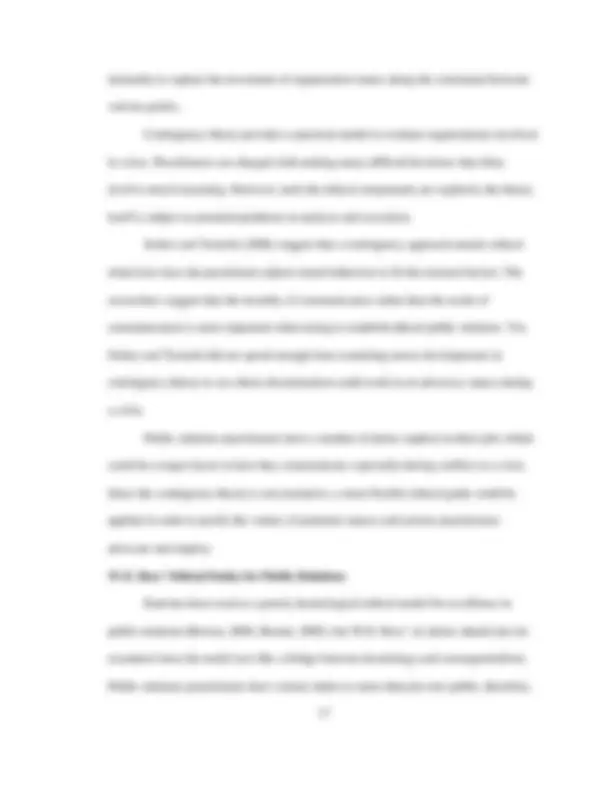
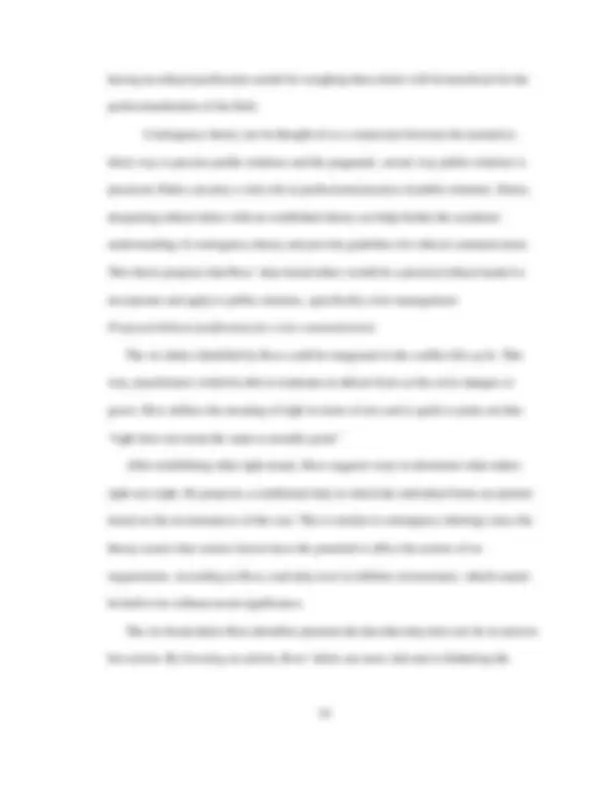
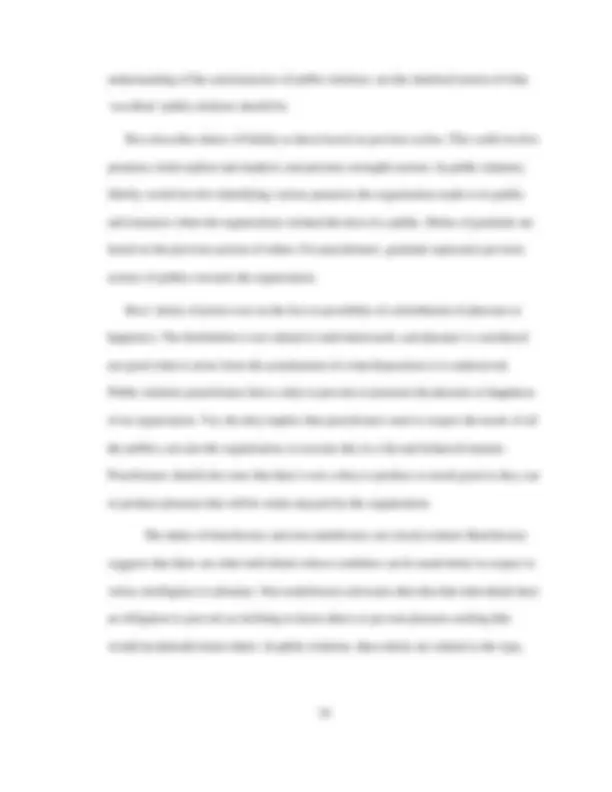
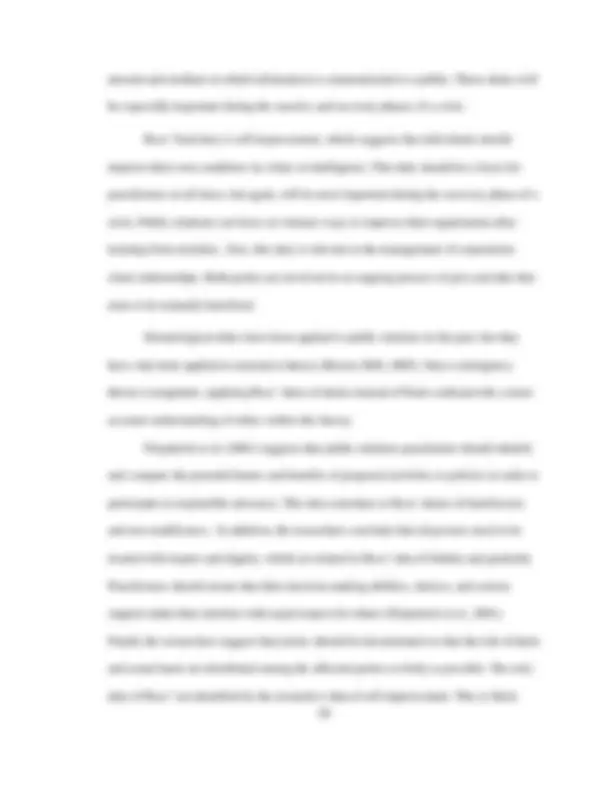
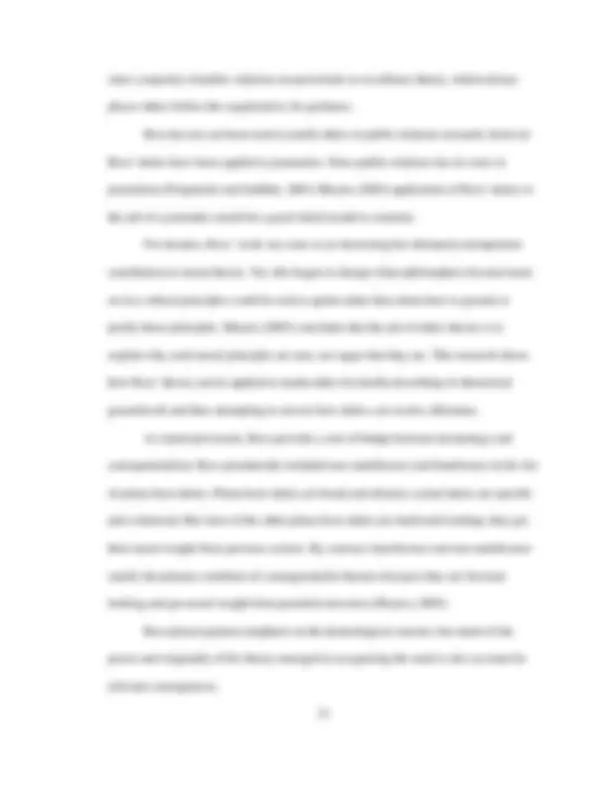
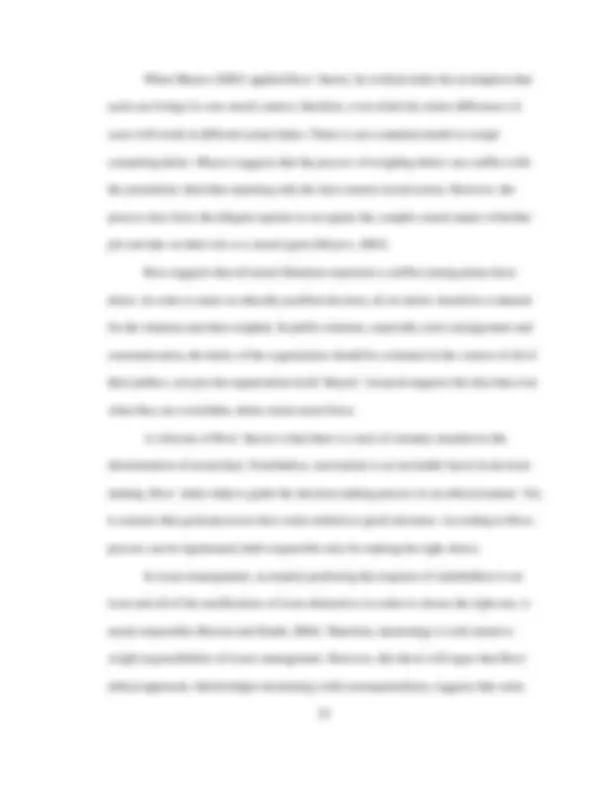
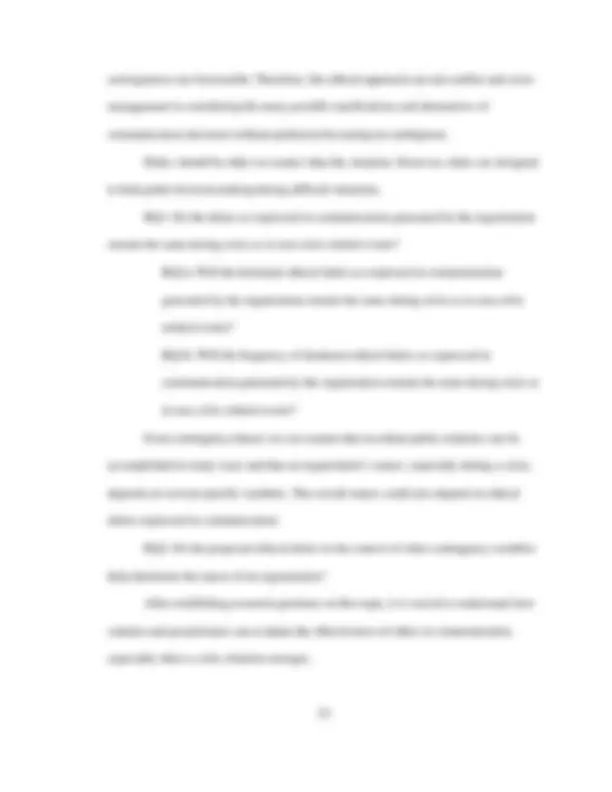
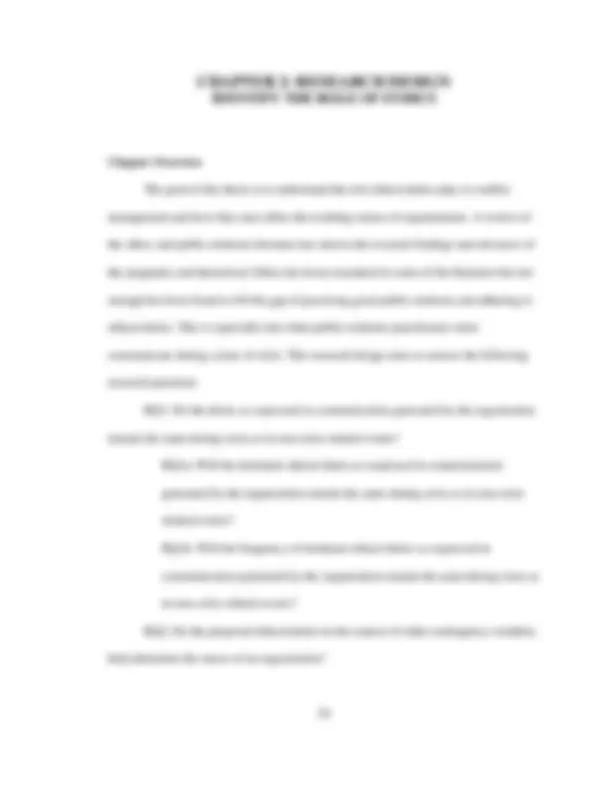
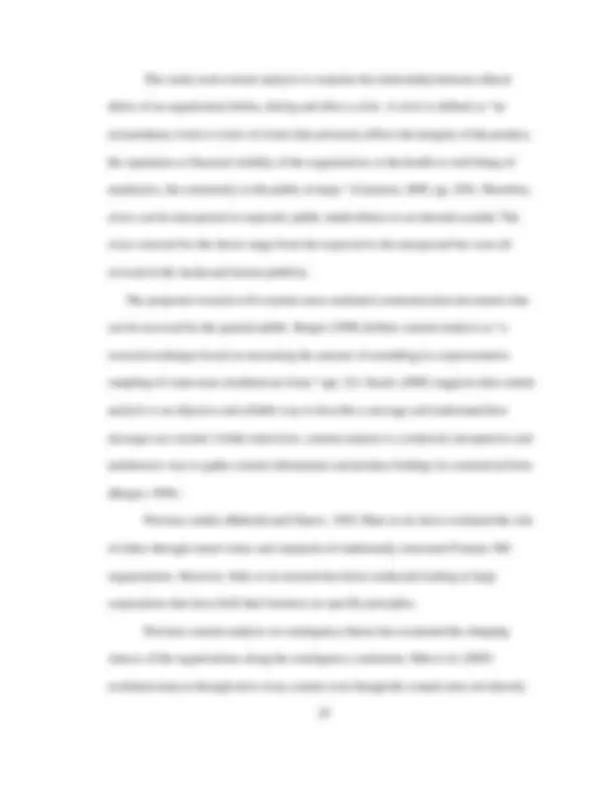
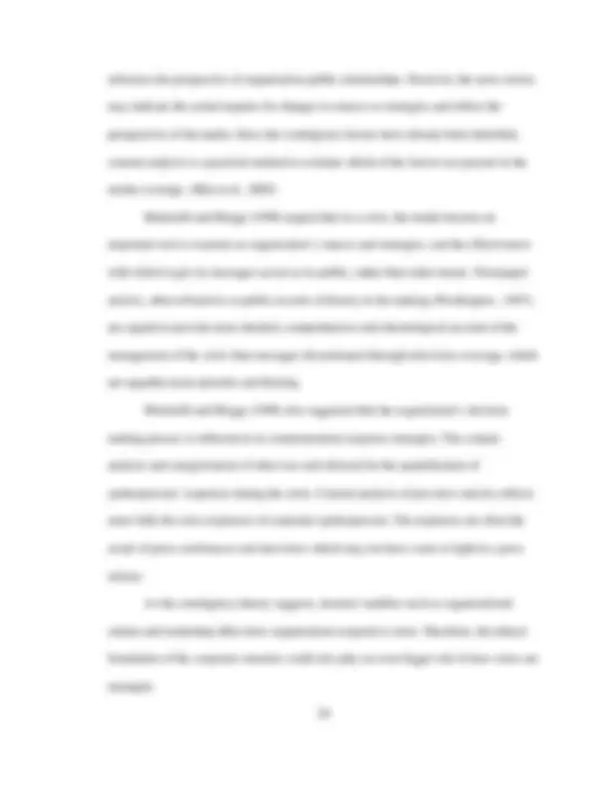
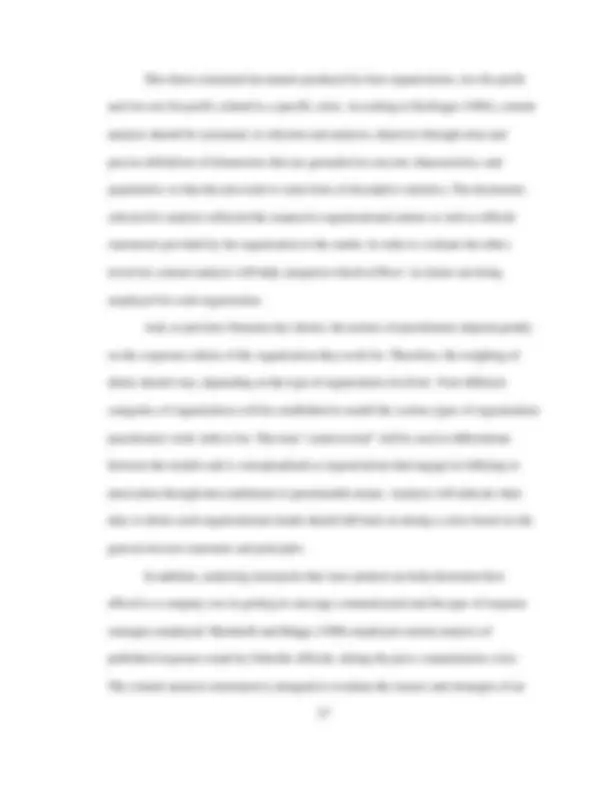
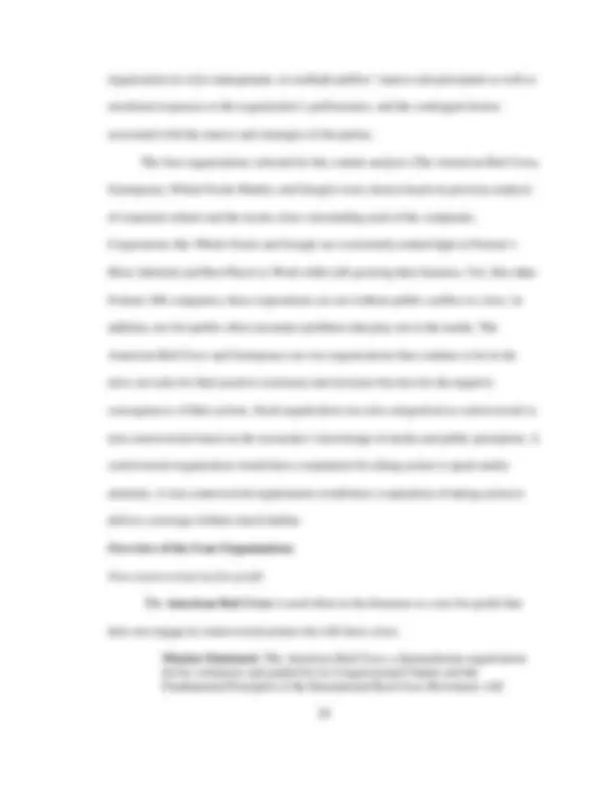
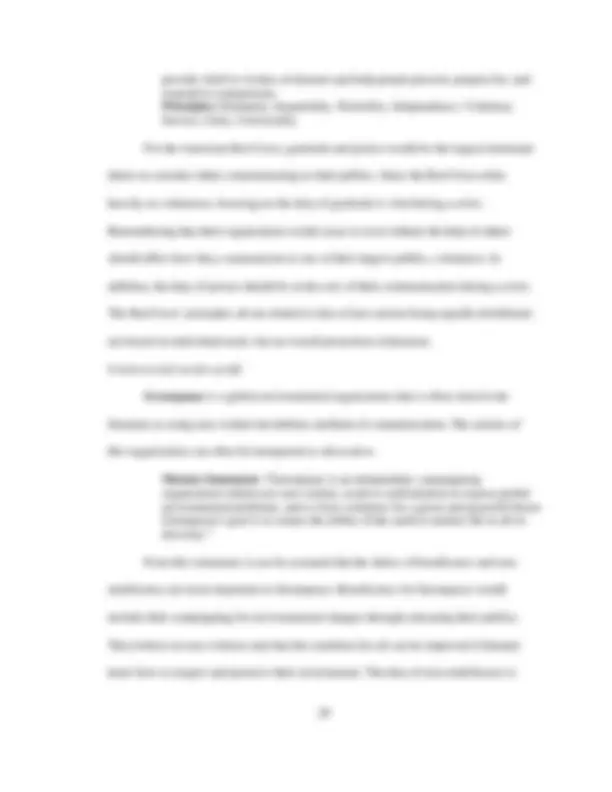
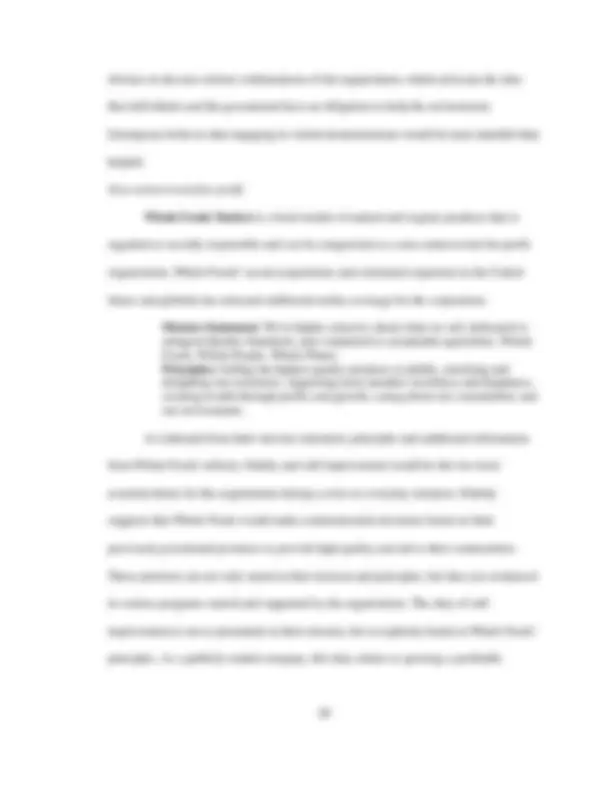
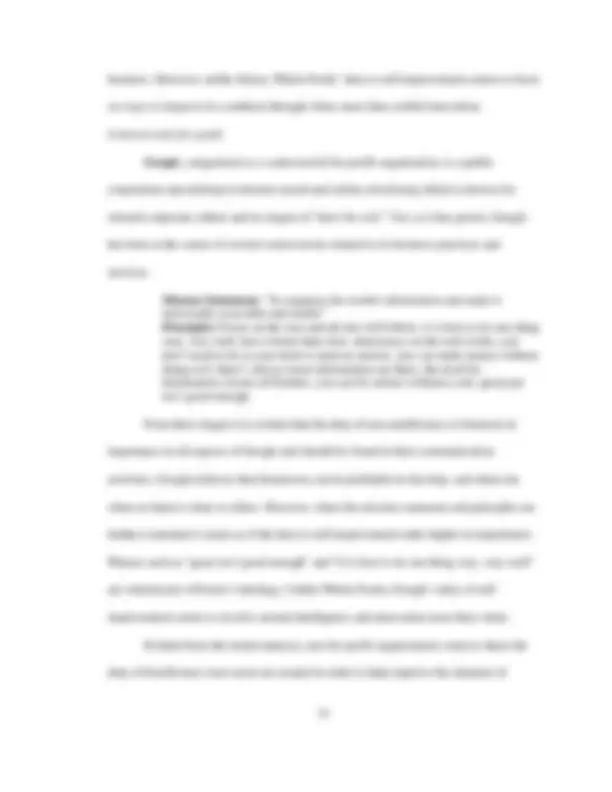
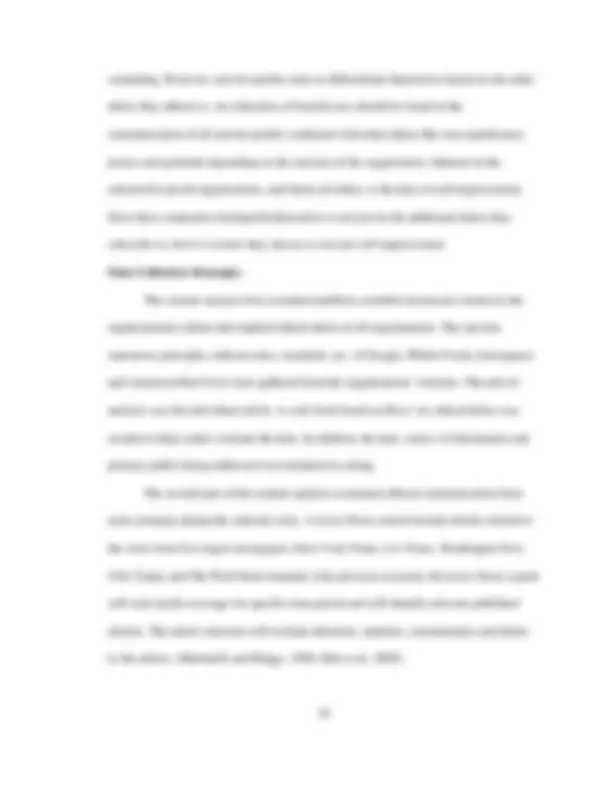
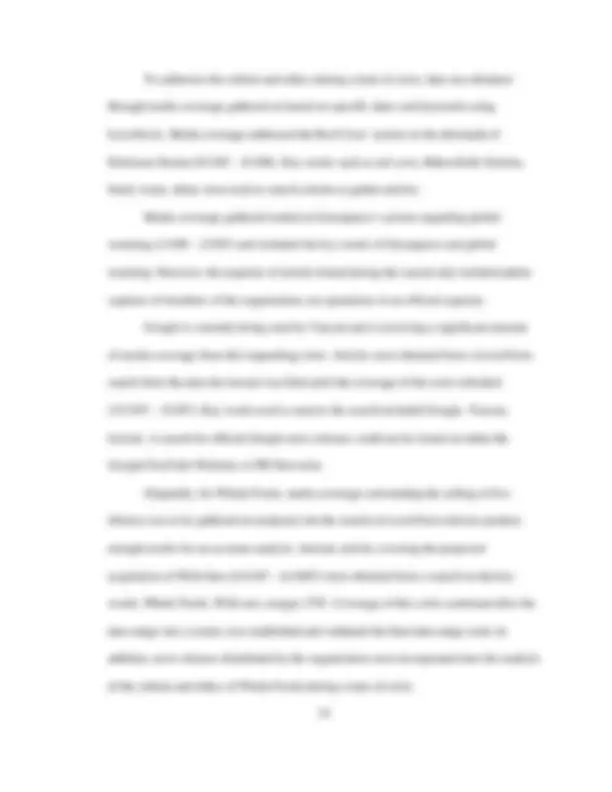
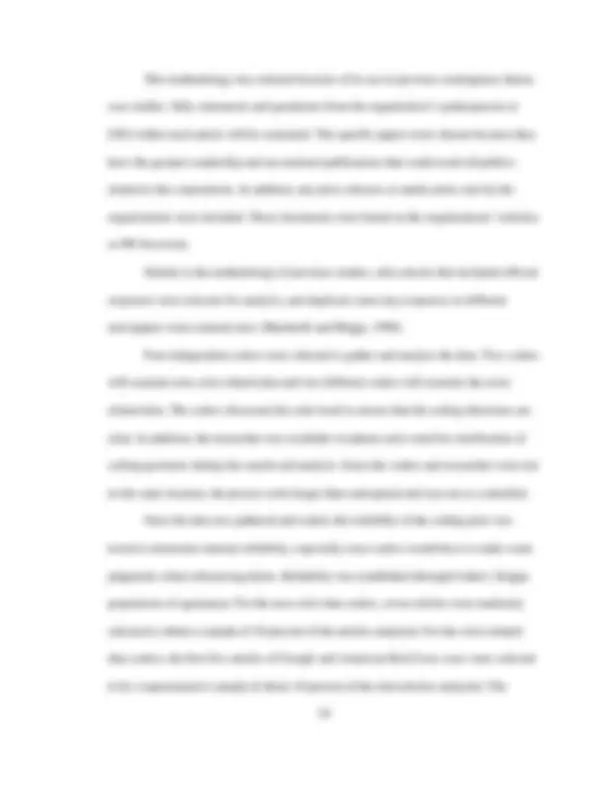
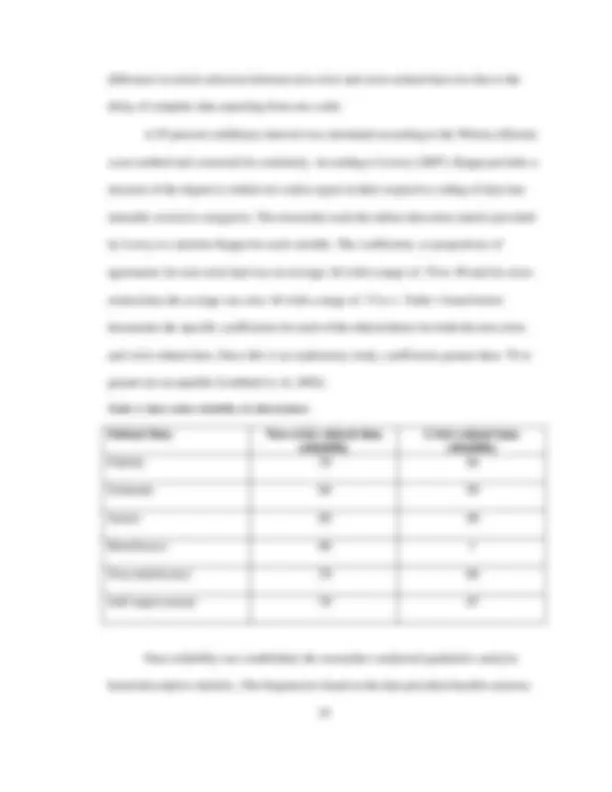
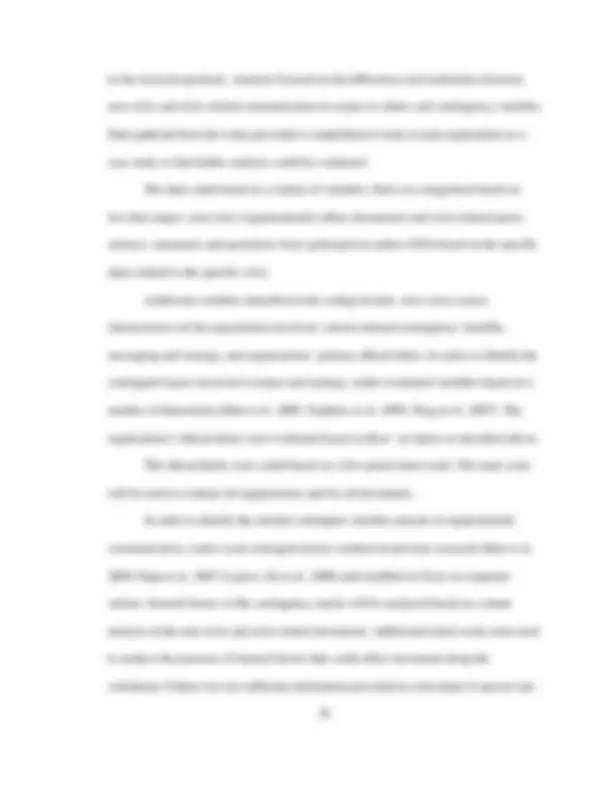



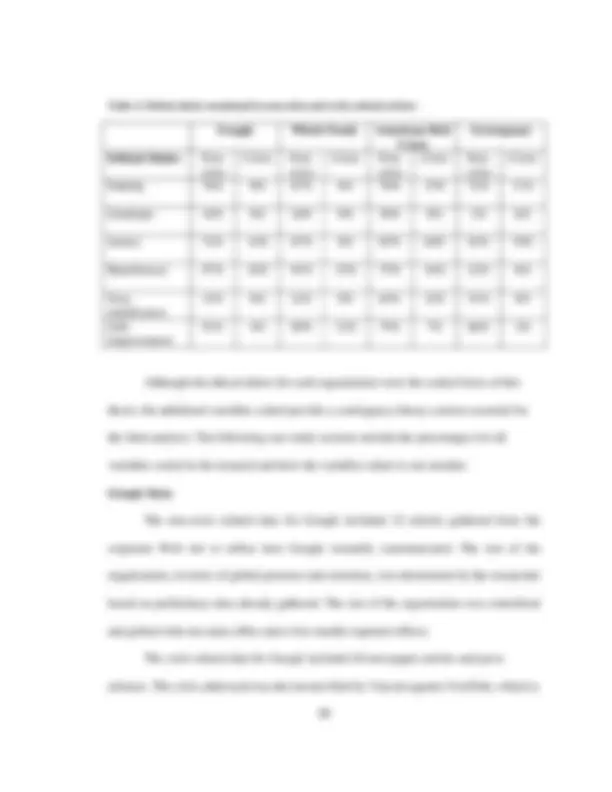
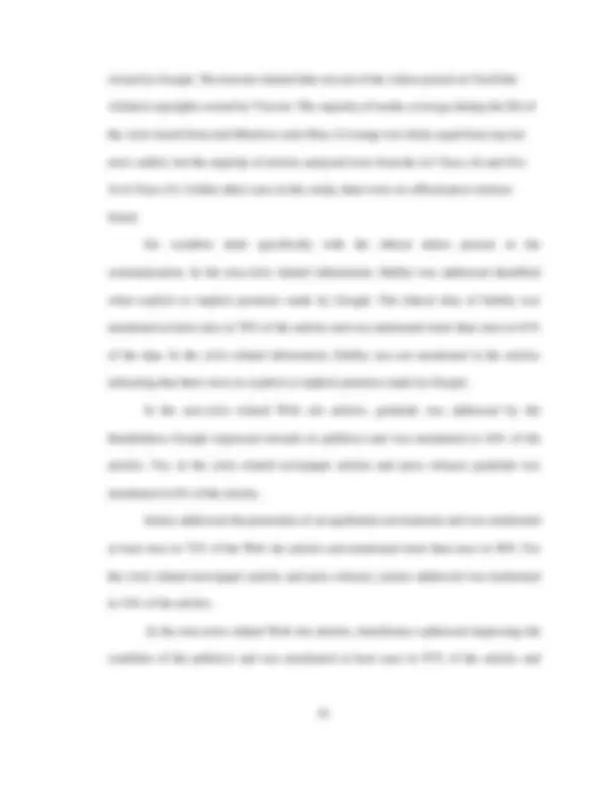
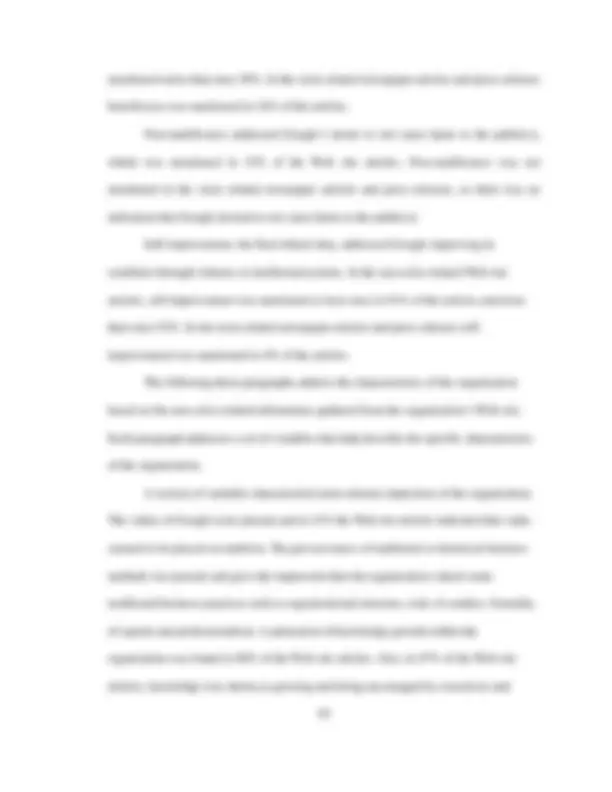
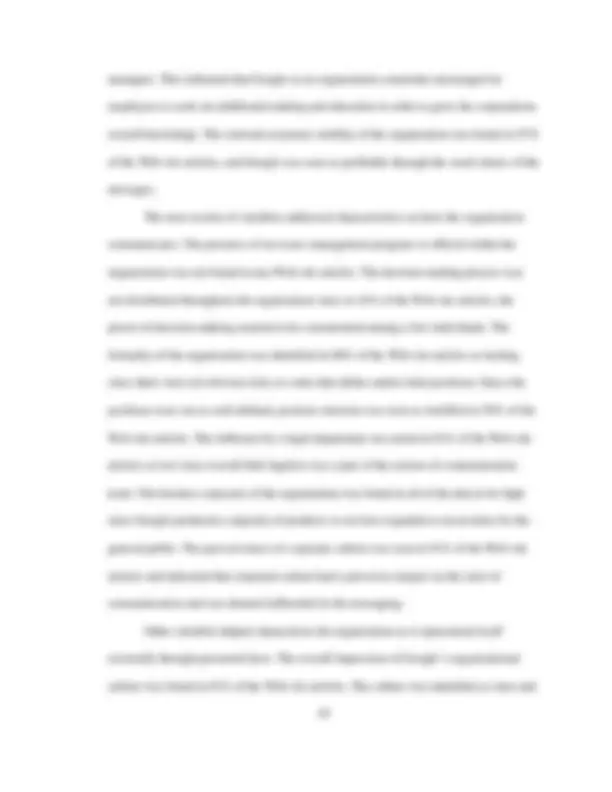
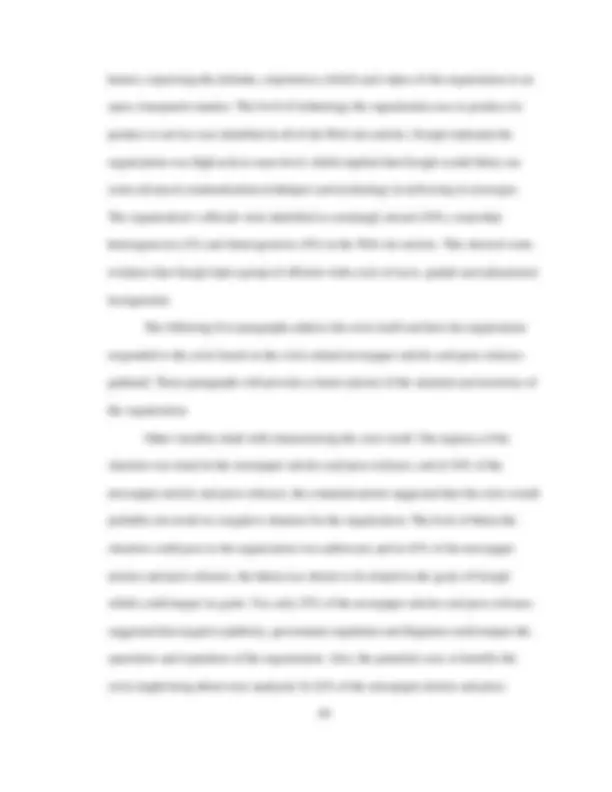
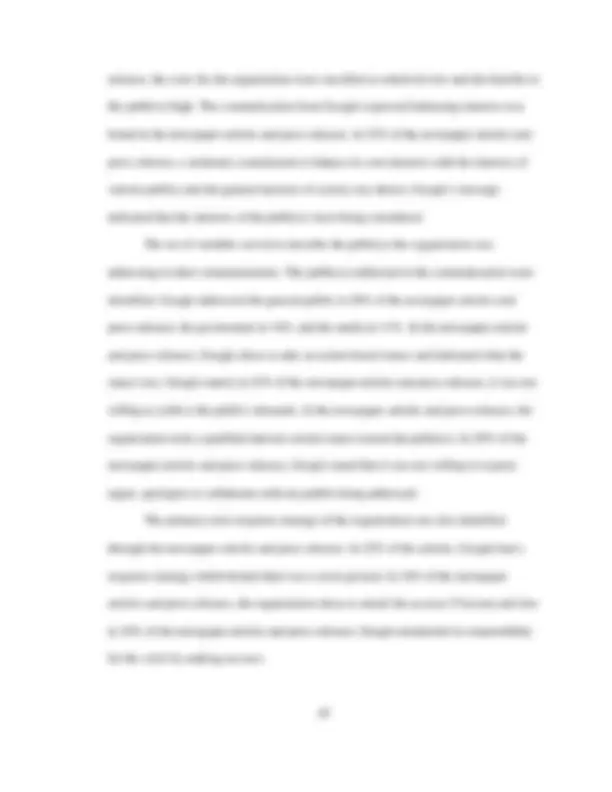
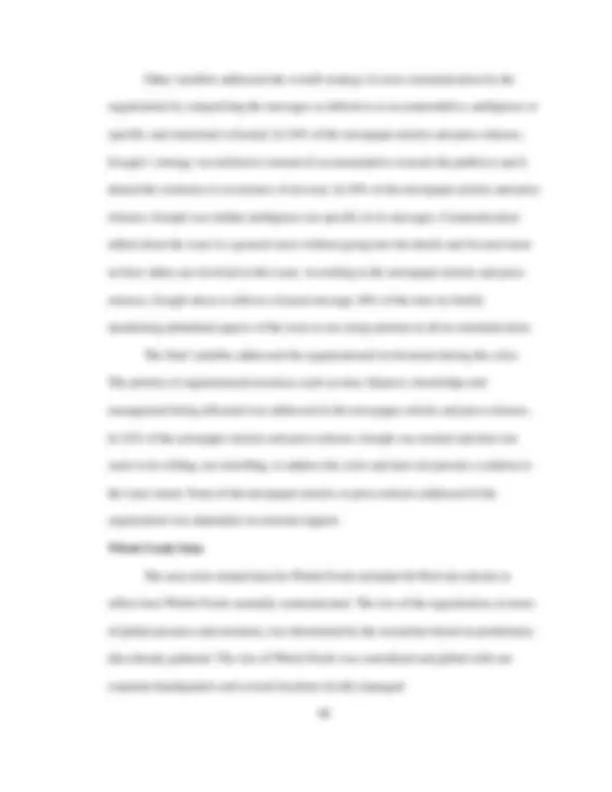
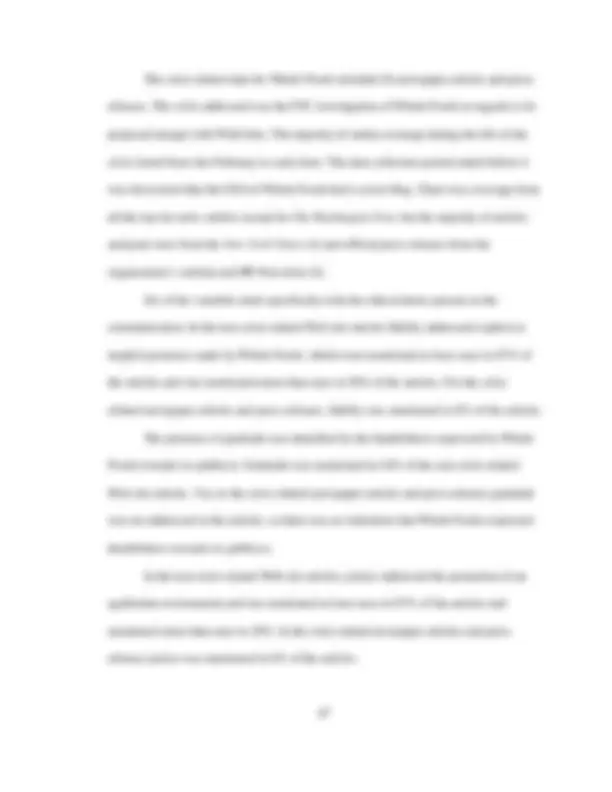
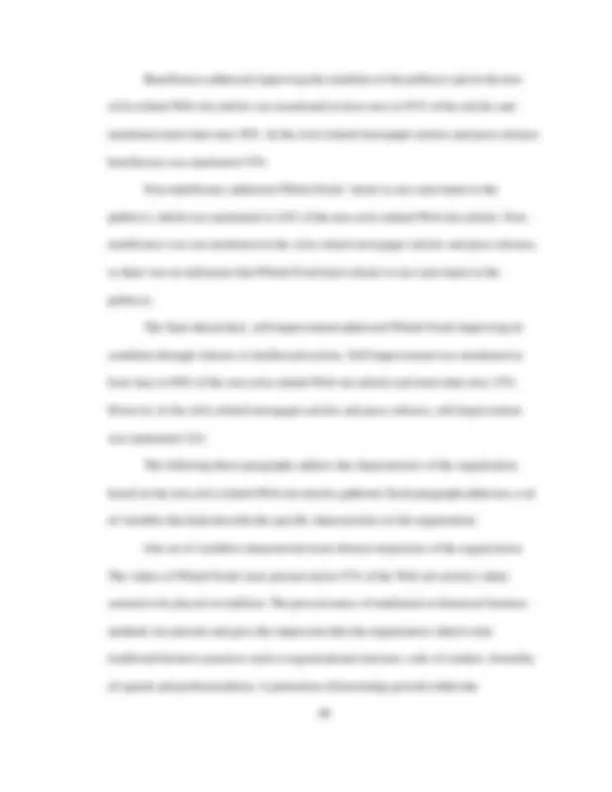
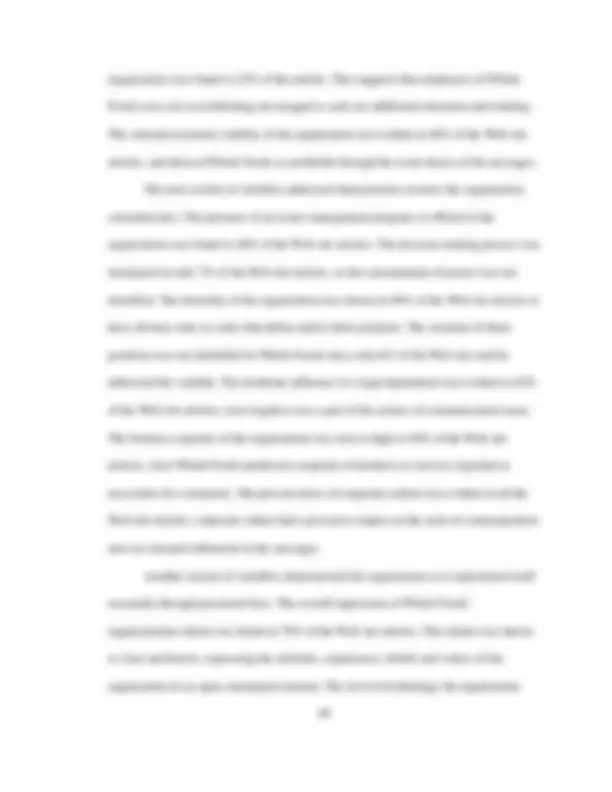
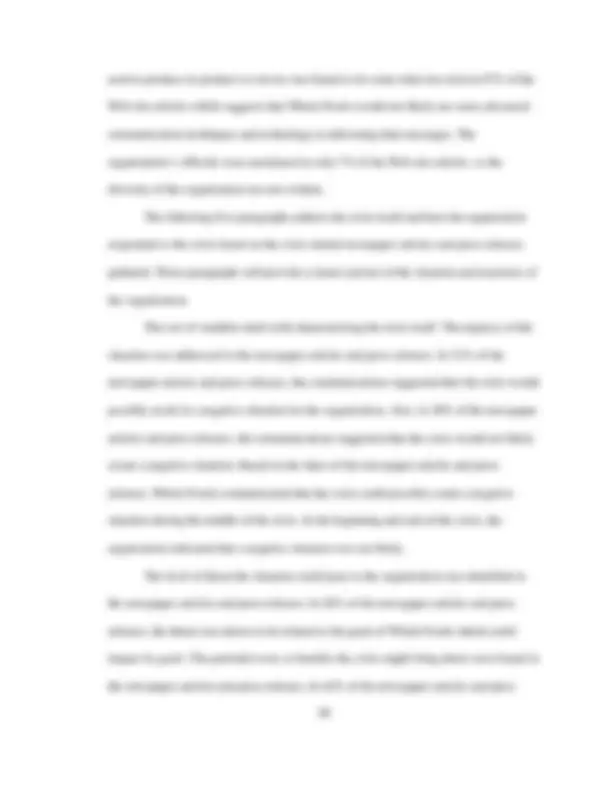
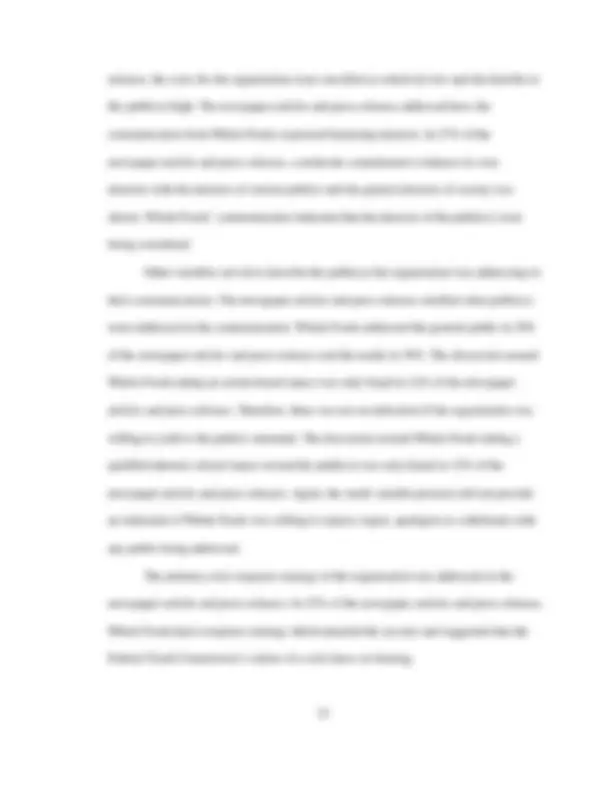
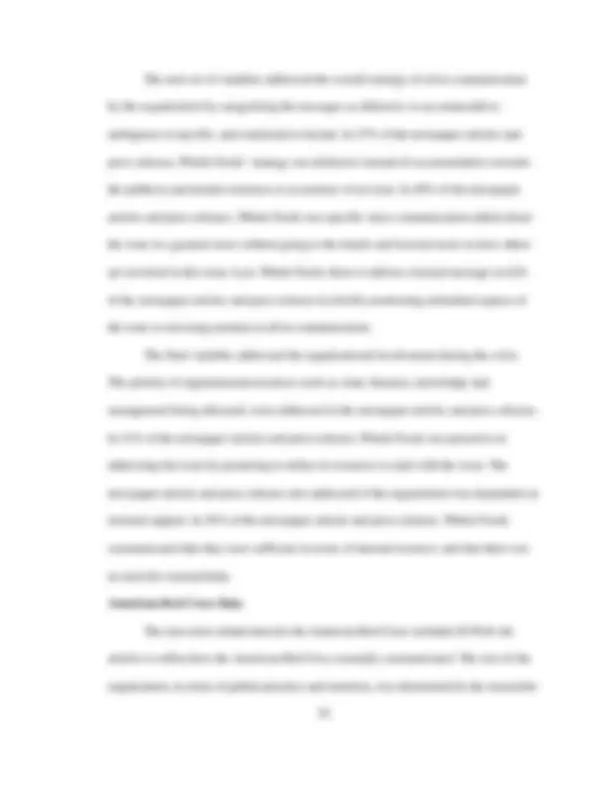
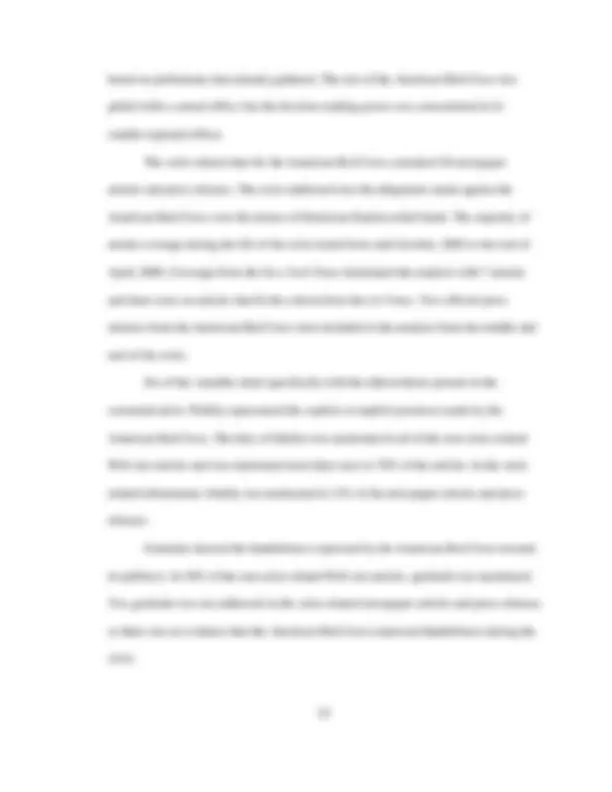
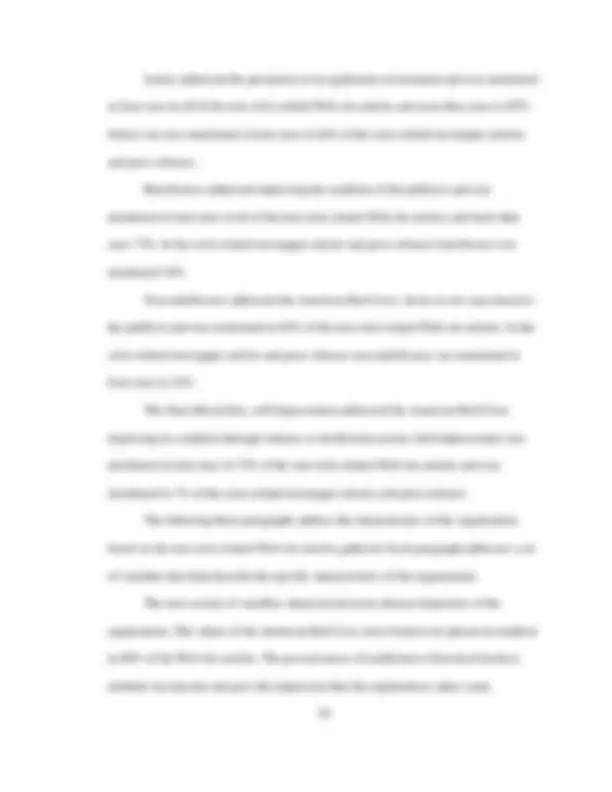
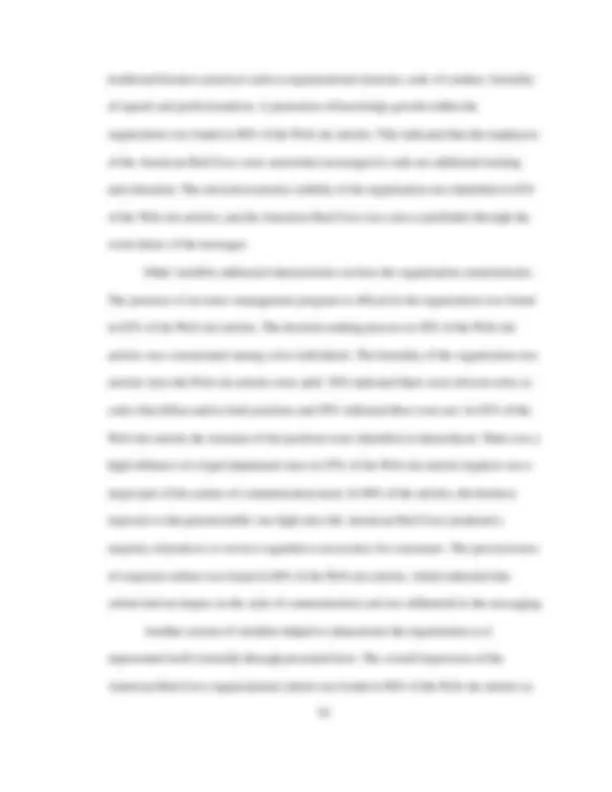
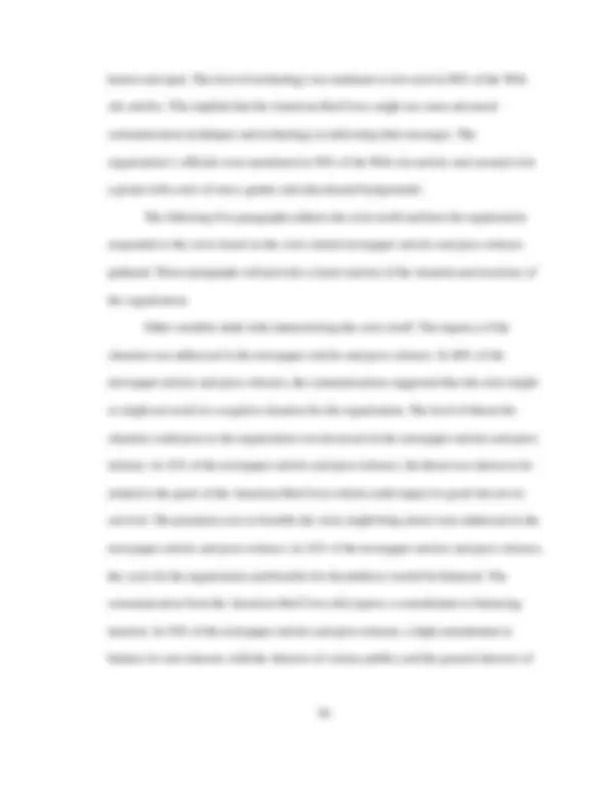
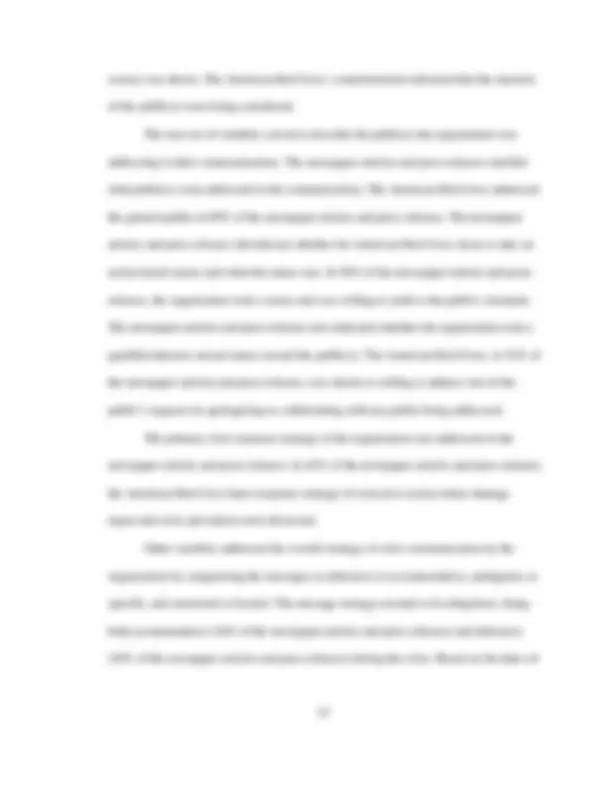
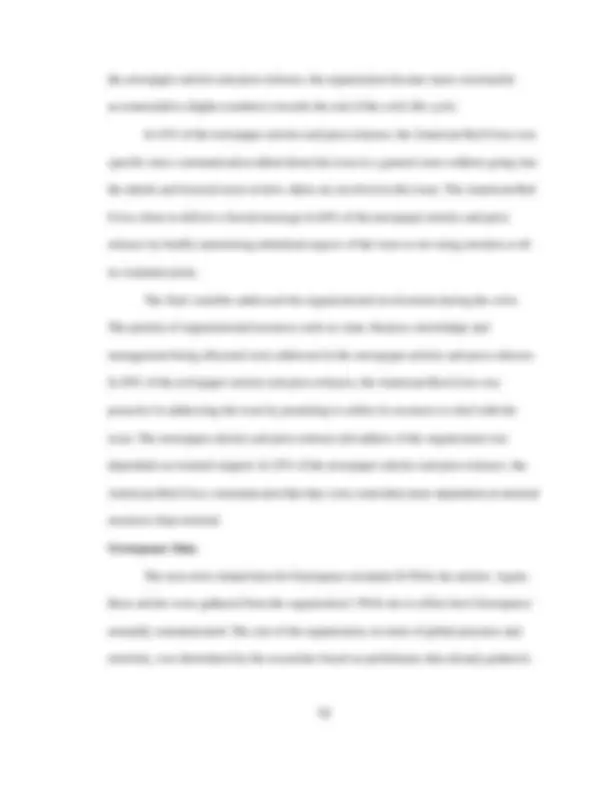
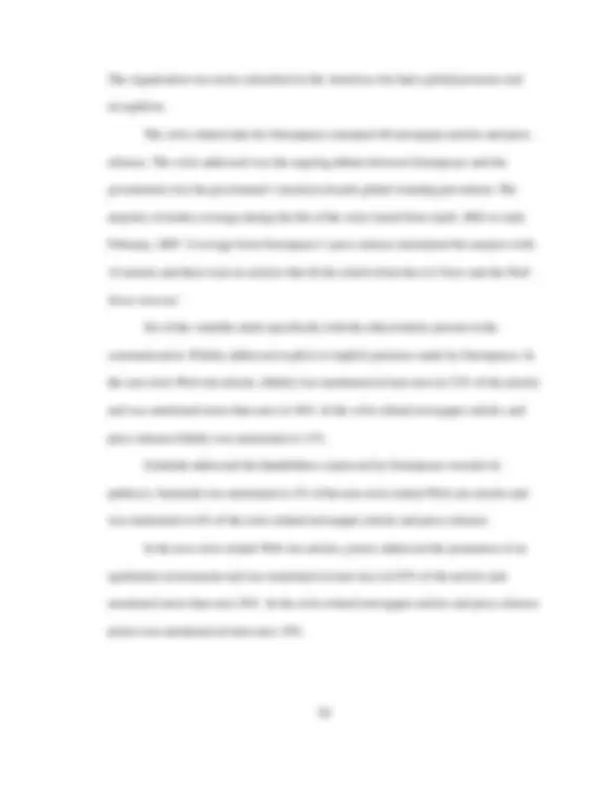
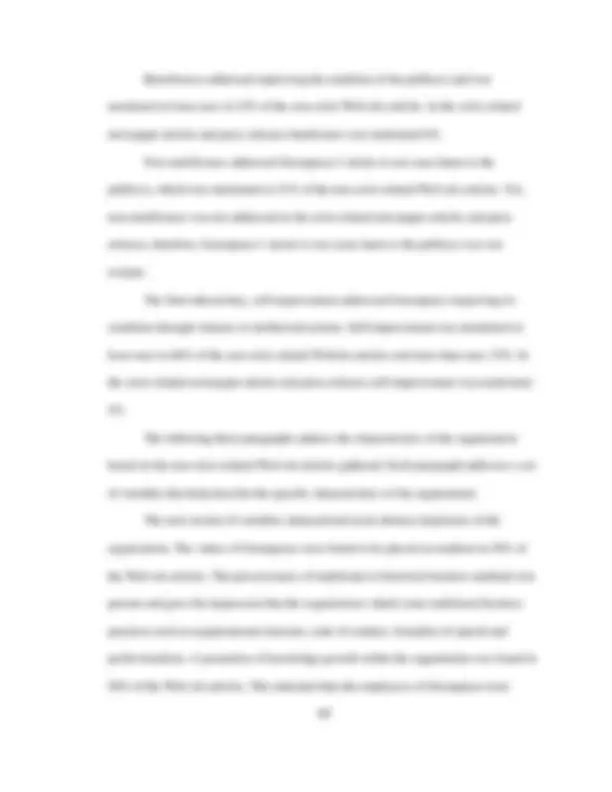
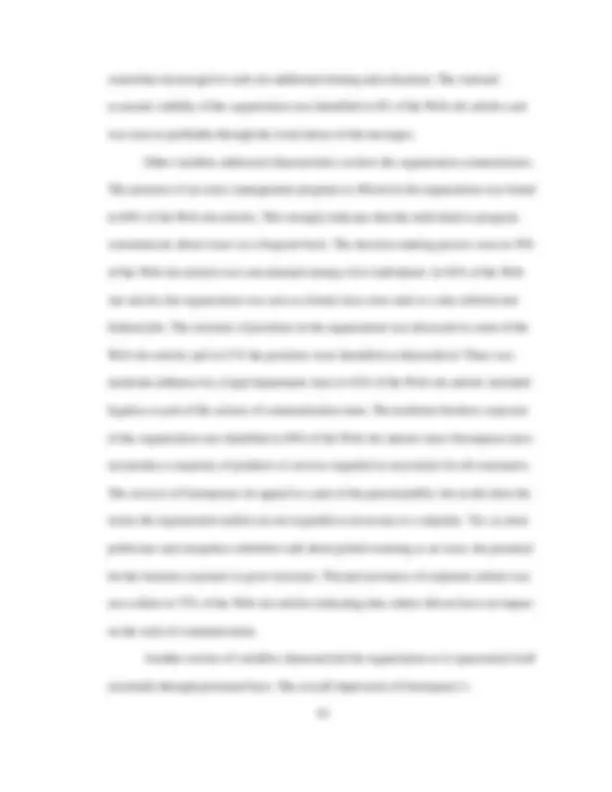
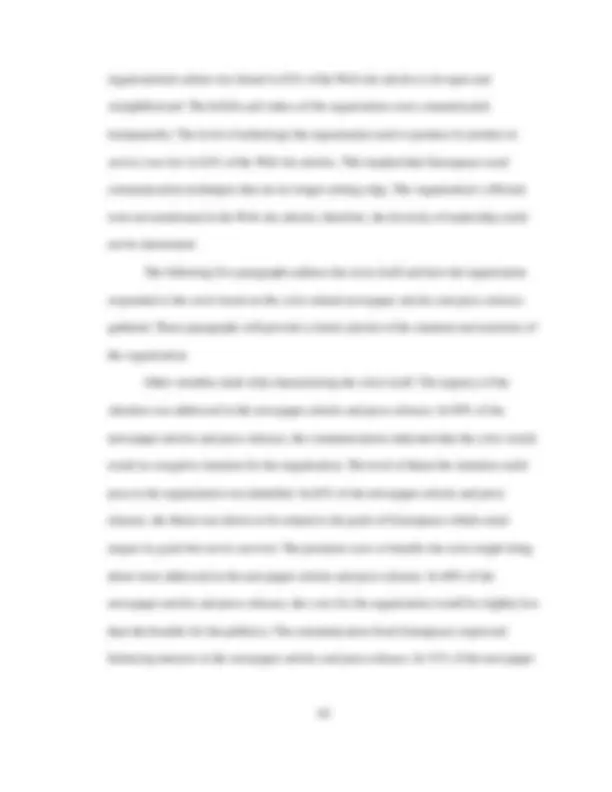
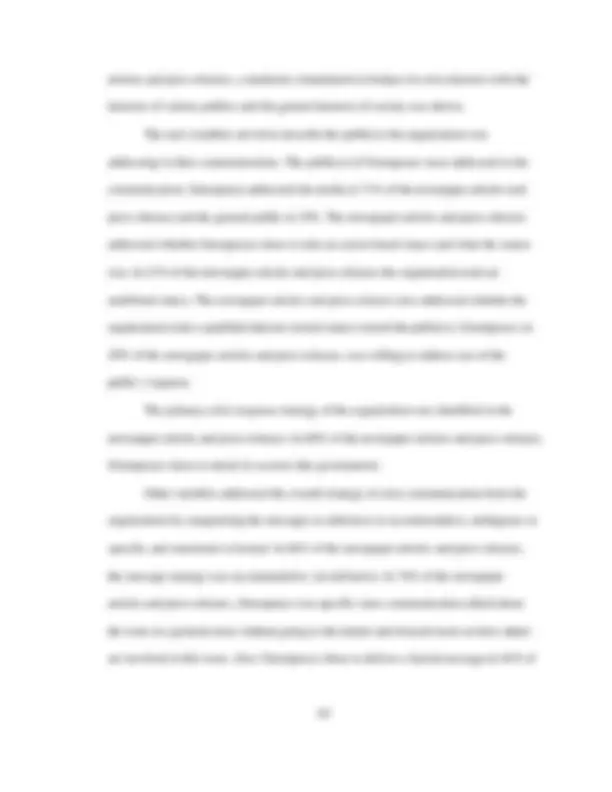
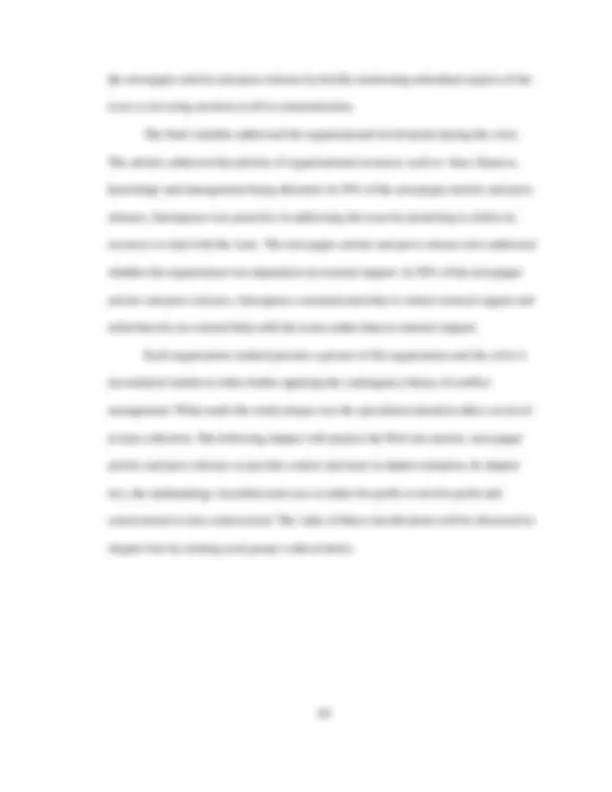
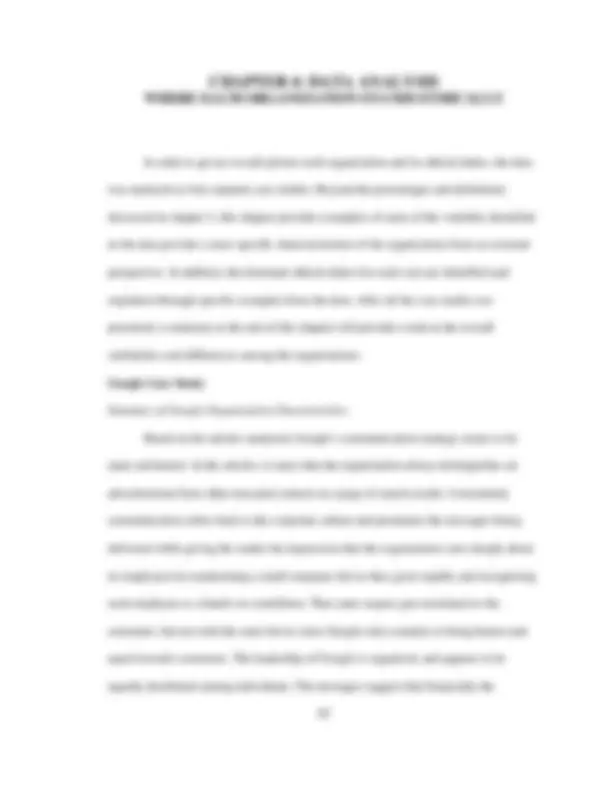
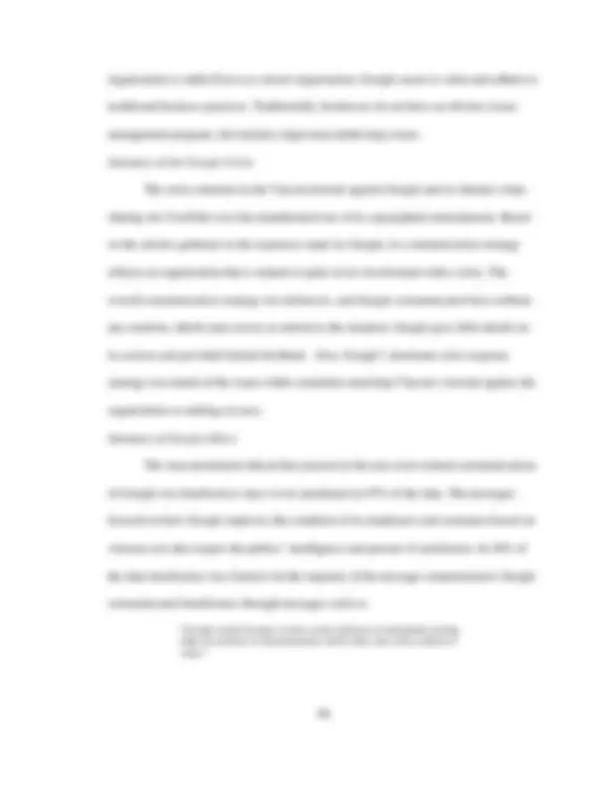
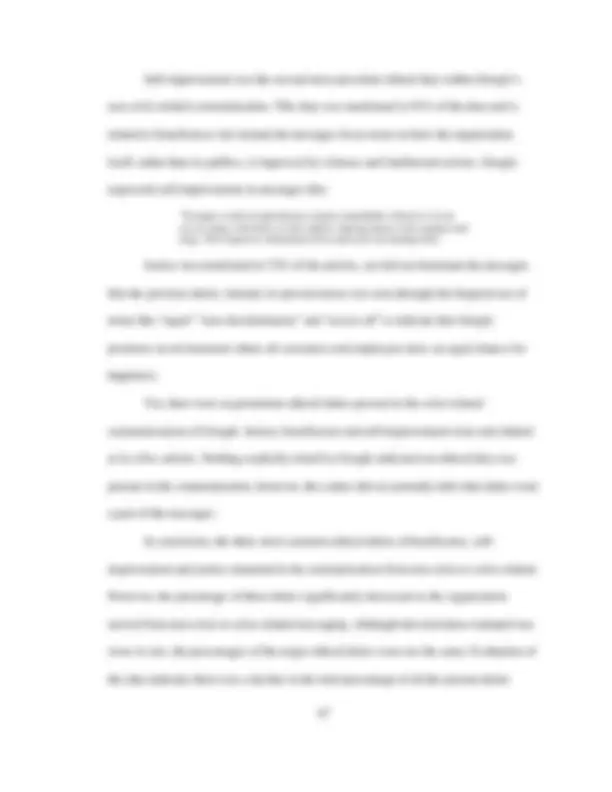
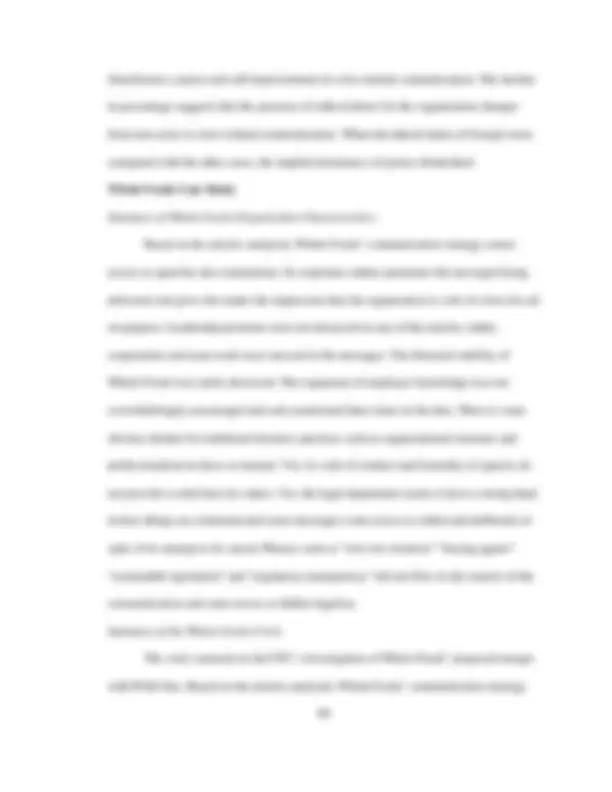
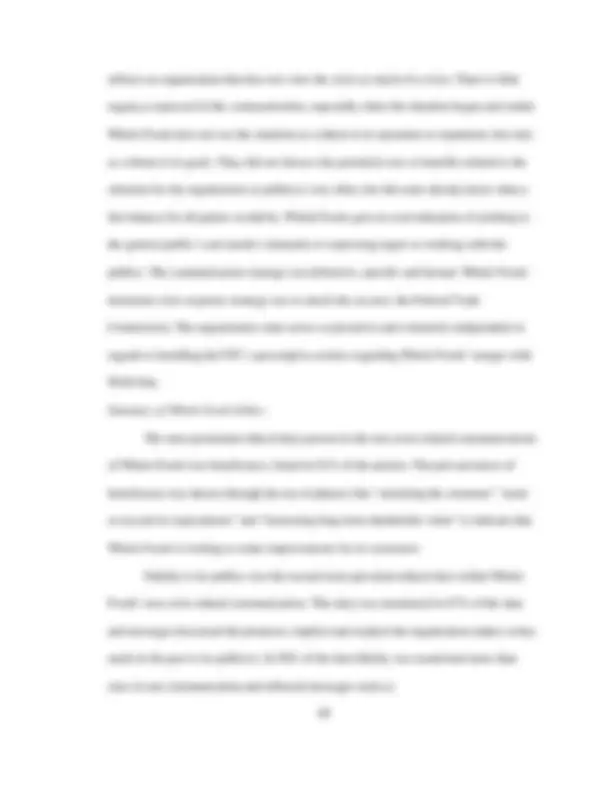
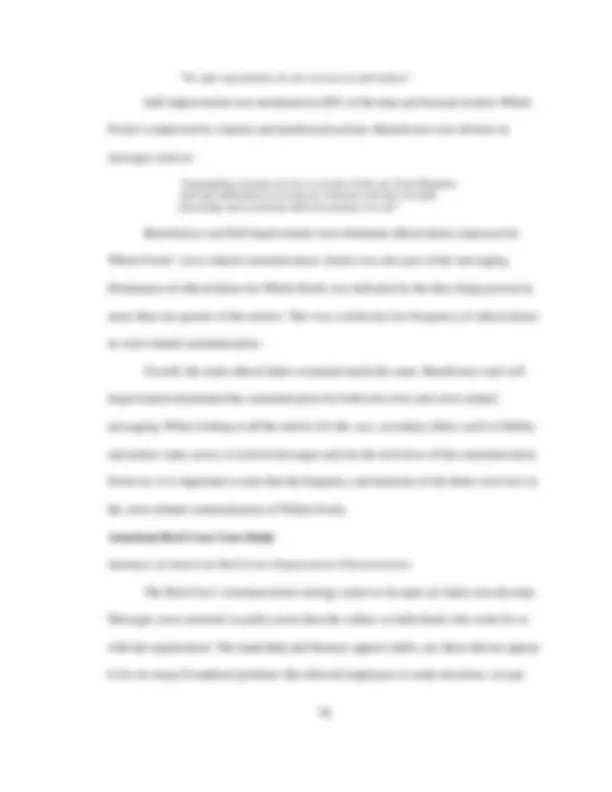
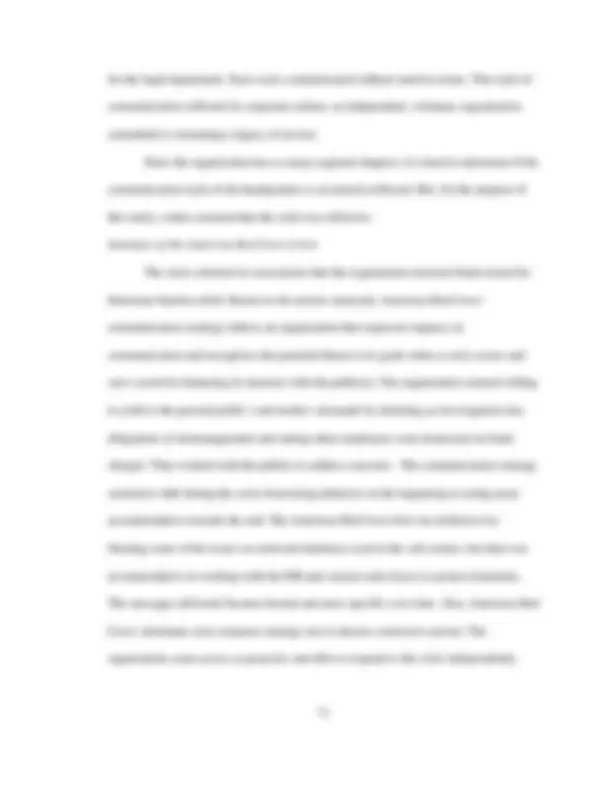

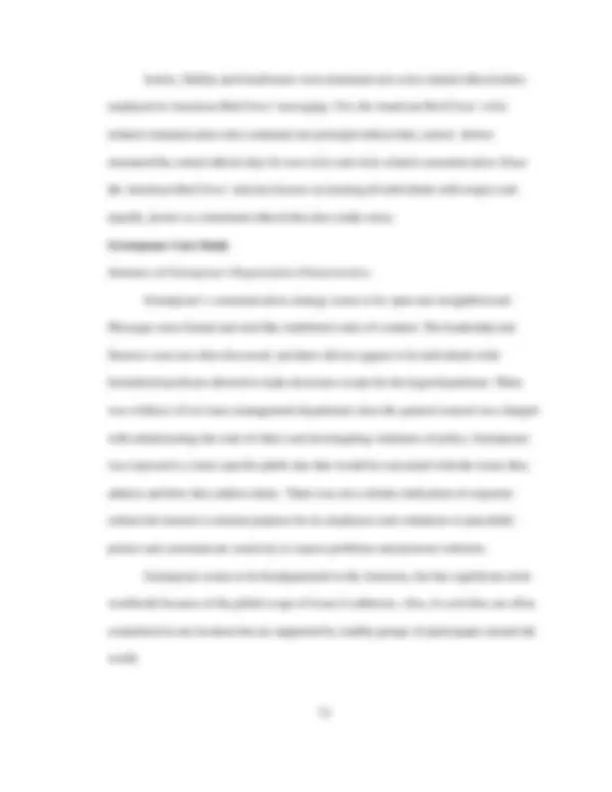
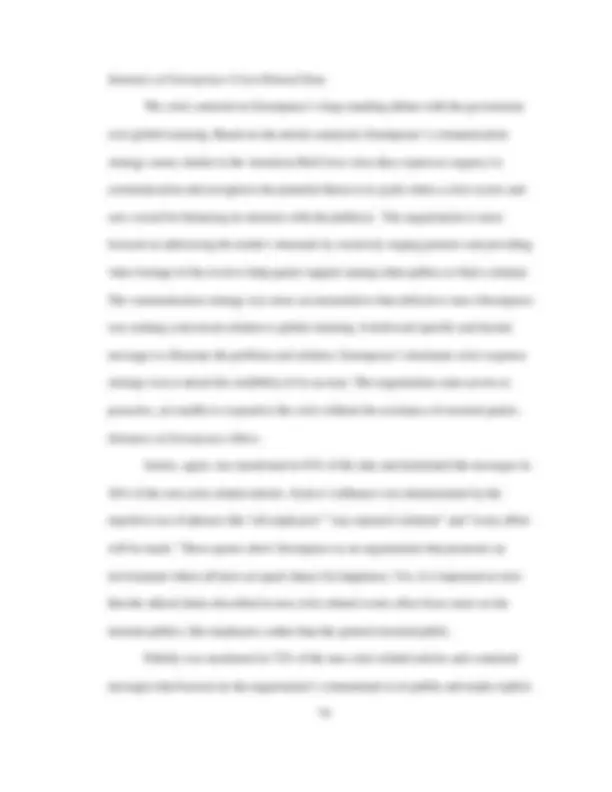
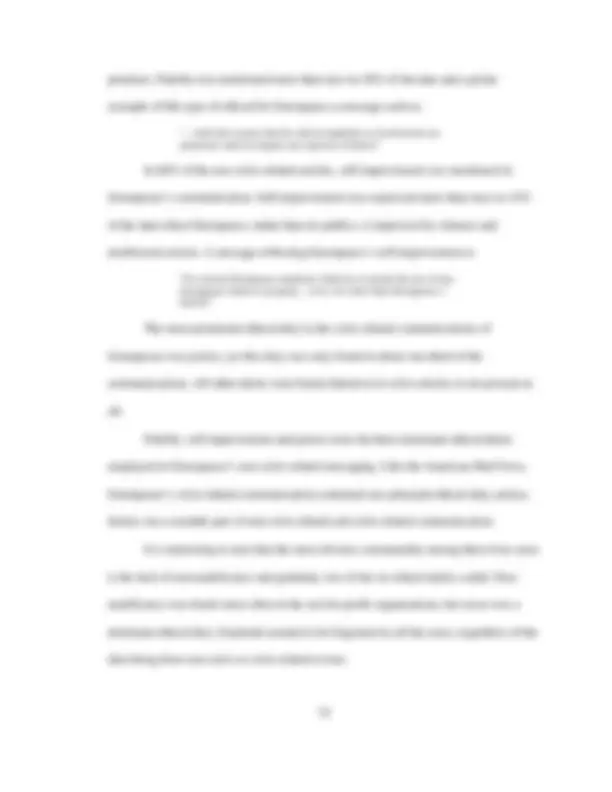
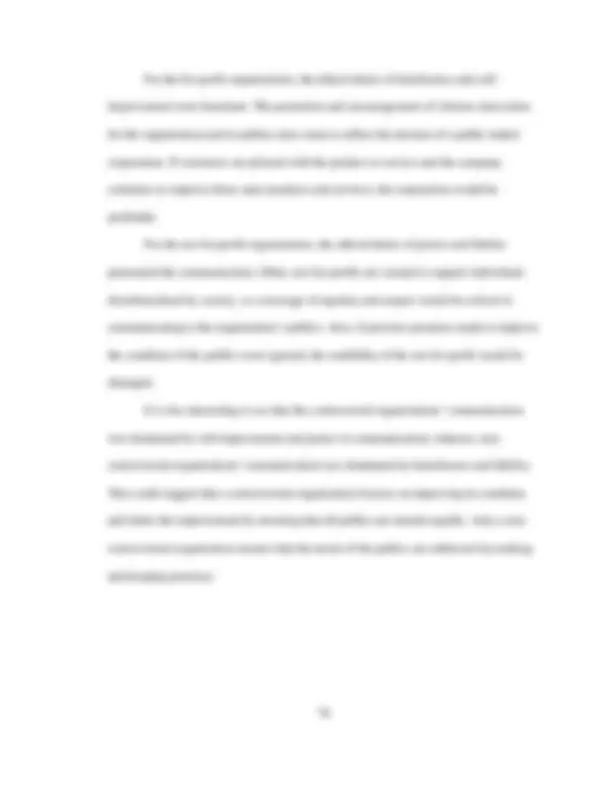
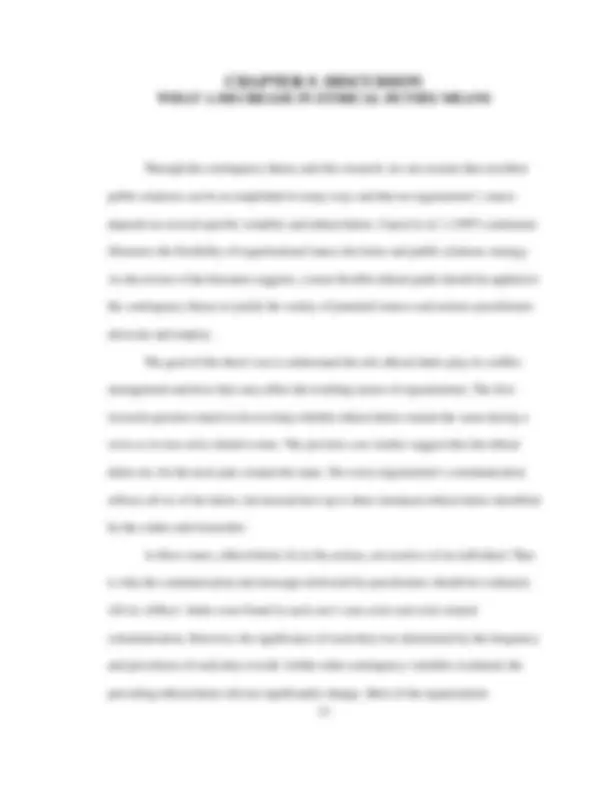
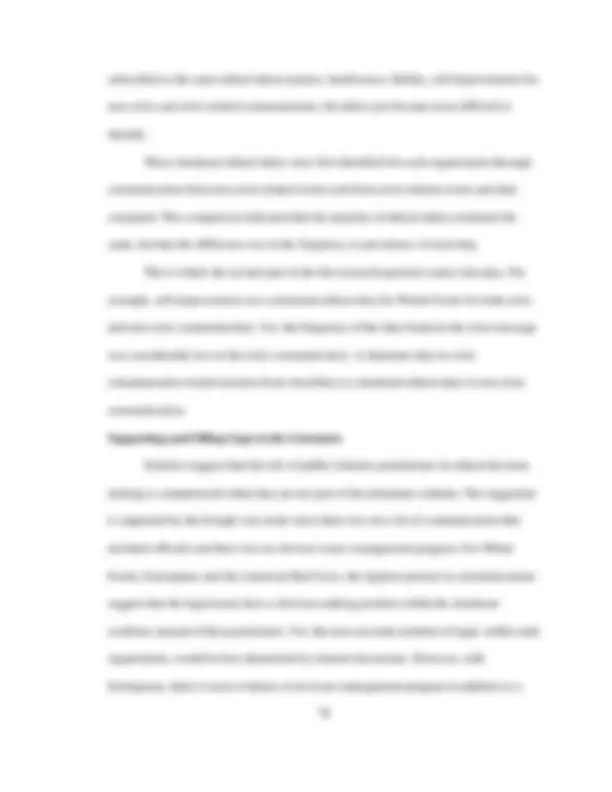
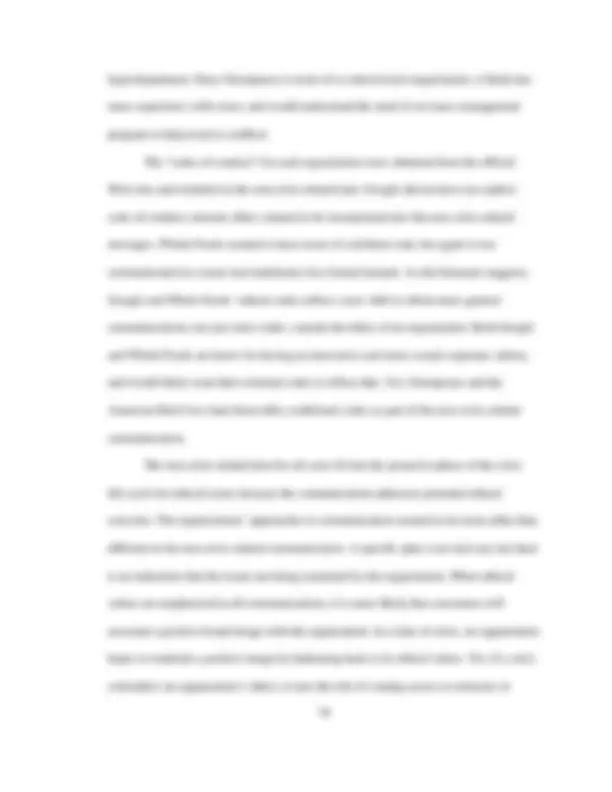
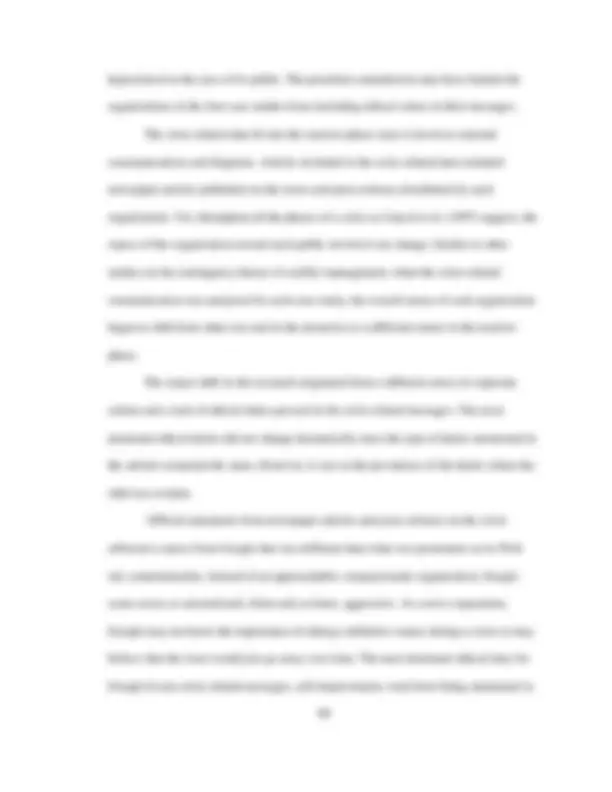
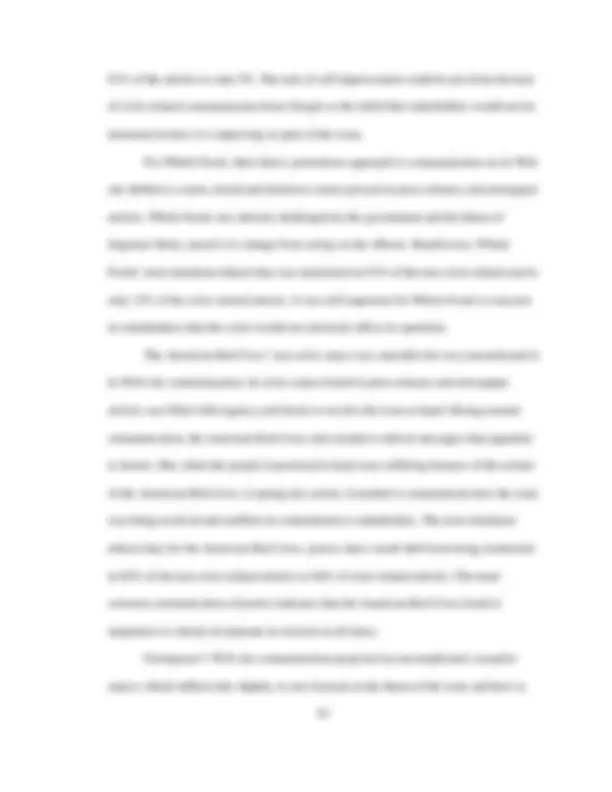
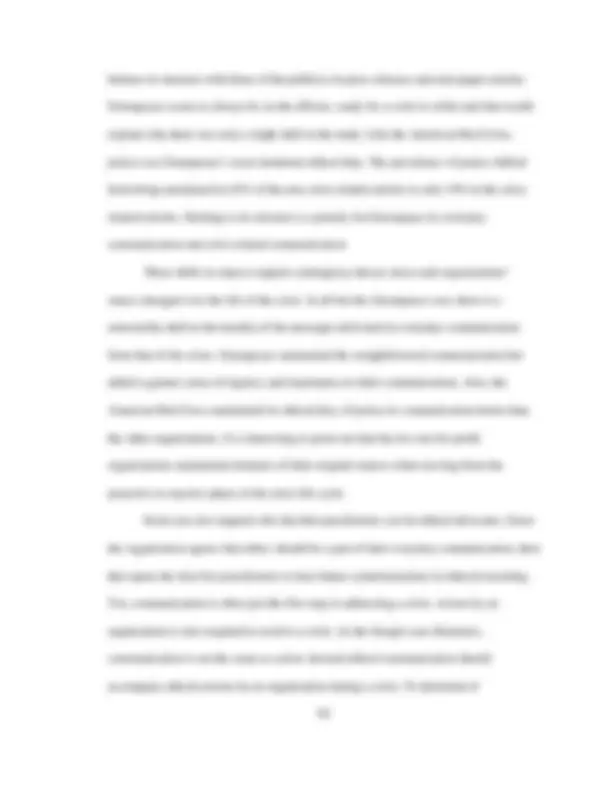
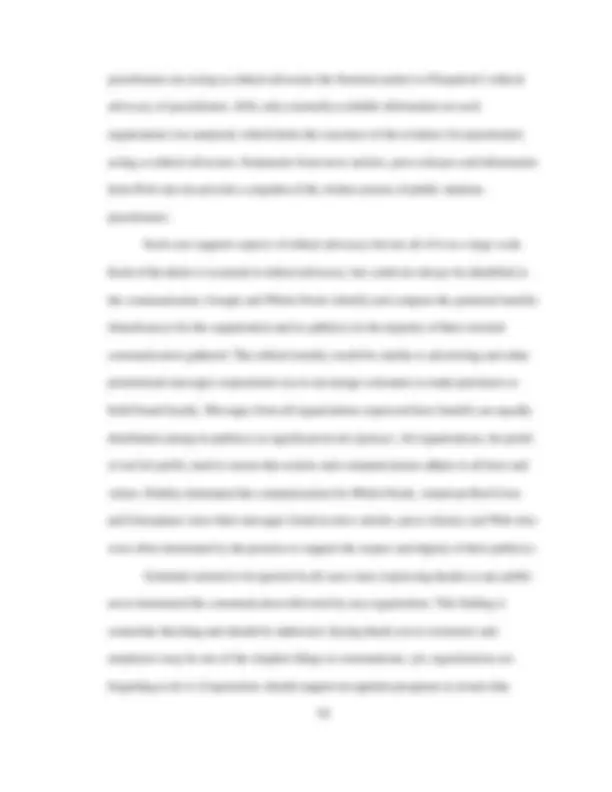
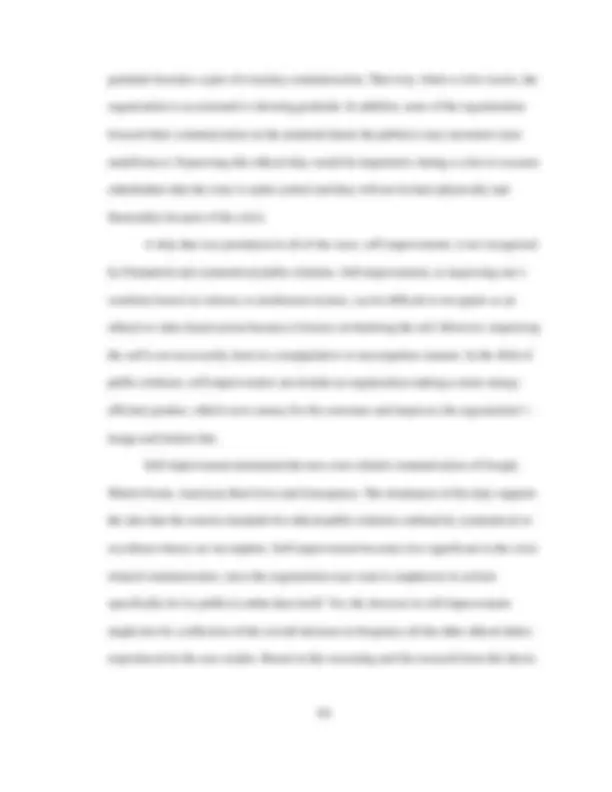
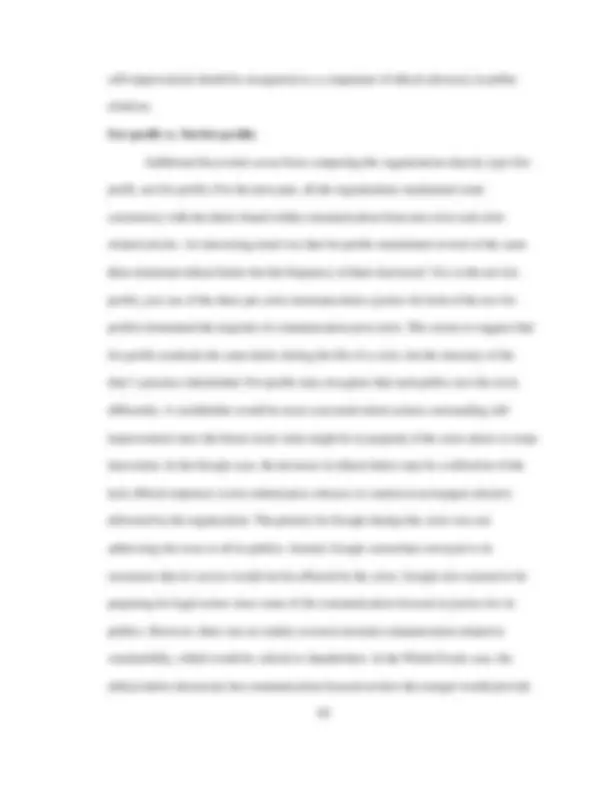
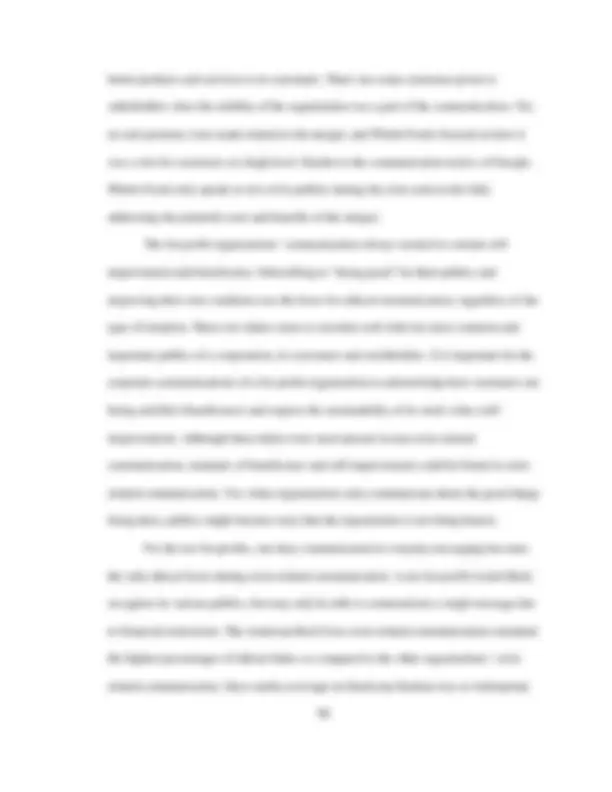
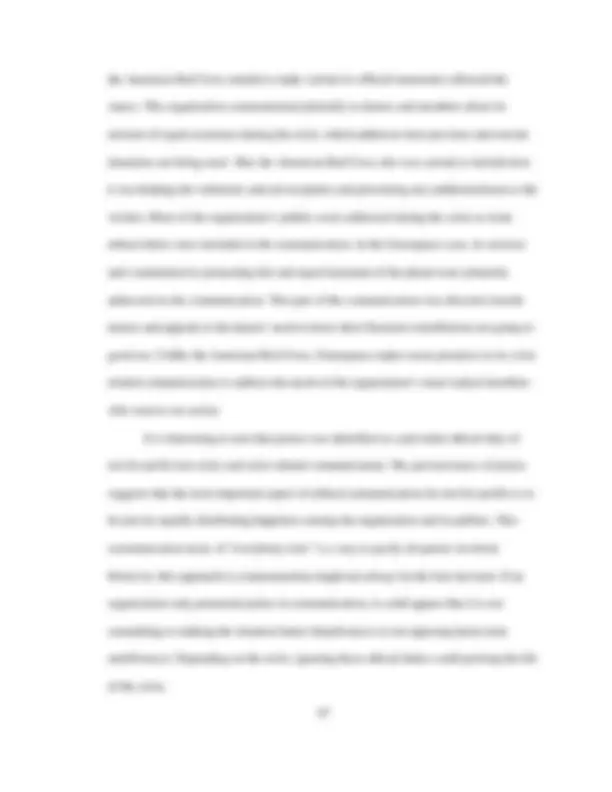
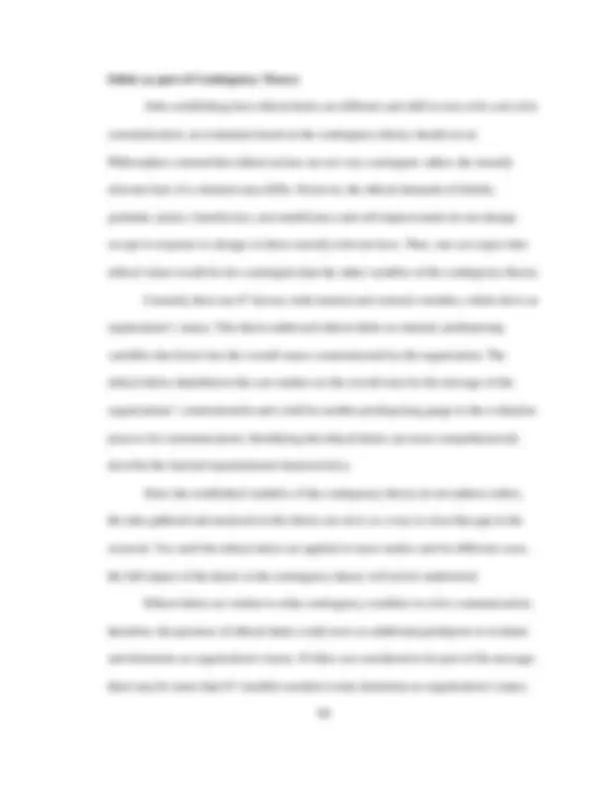
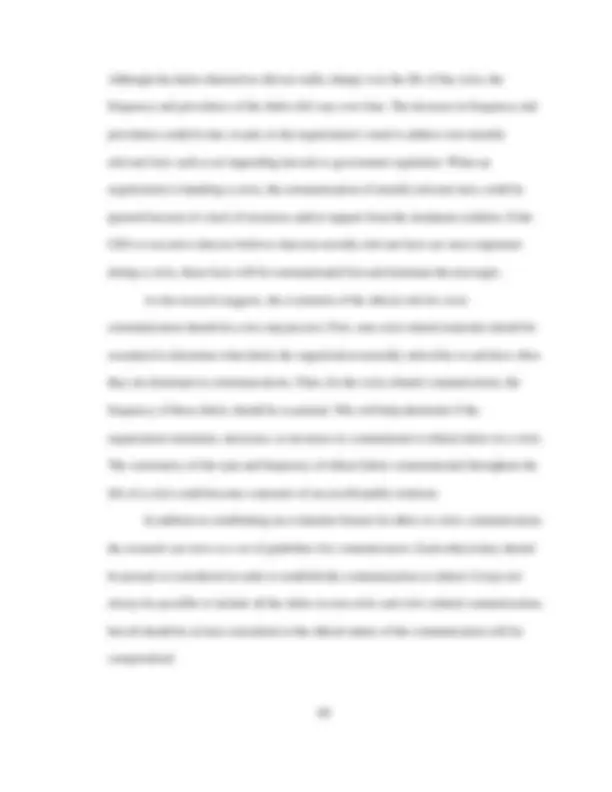
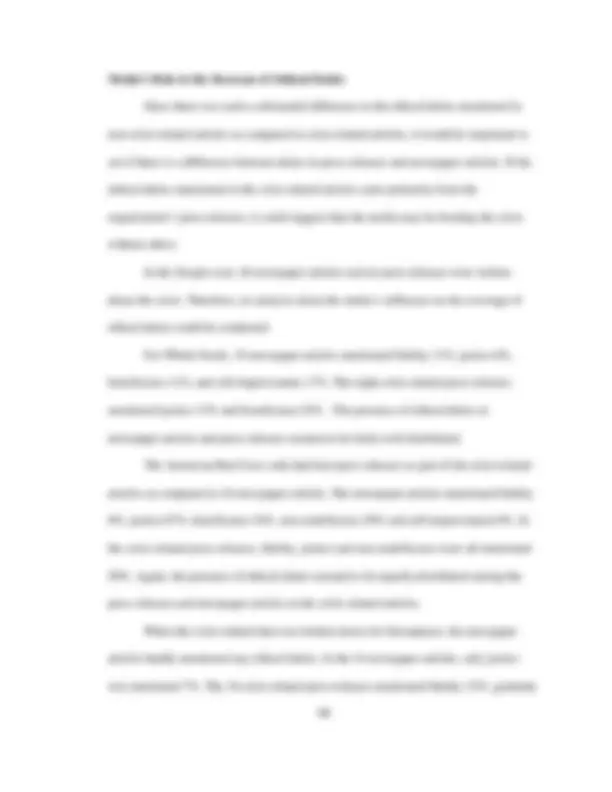
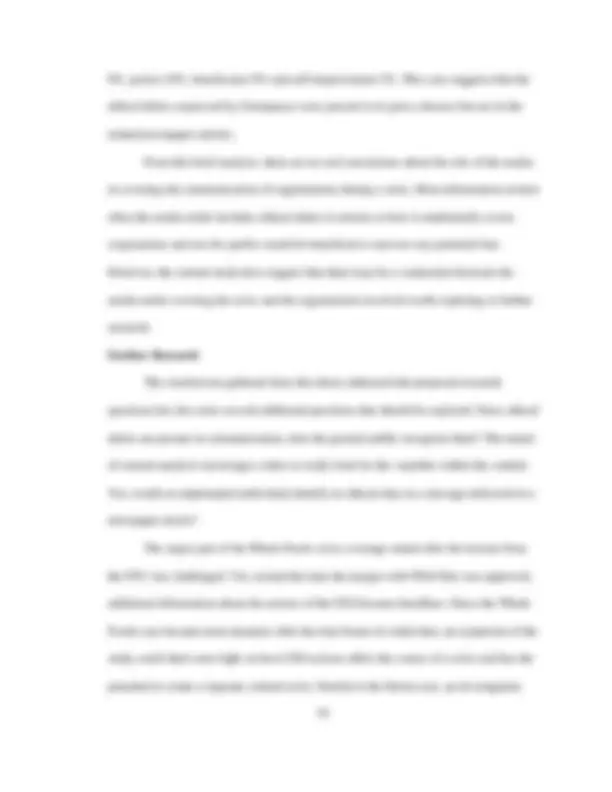
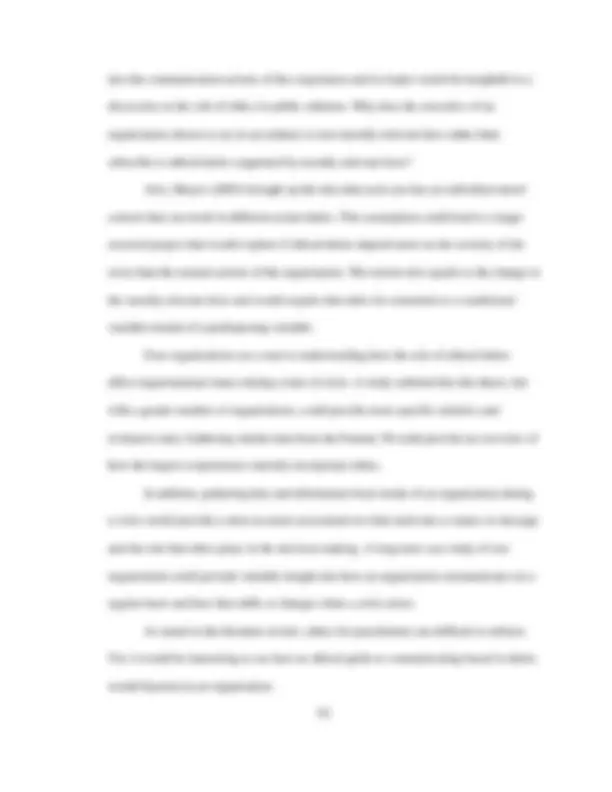


Study with the several resources on Docsity

Earn points by helping other students or get them with a premium plan


Prepare for your exams
Study with the several resources on Docsity

Earn points to download
Earn points by helping other students or get them with a premium plan
Community
Ask the community for help and clear up your study doubts
Discover the best universities in your country according to Docsity users
Free resources
Download our free guides on studying techniques, anxiety management strategies, and thesis advice from Docsity tutors
This thesis investigates how duty-based ethics can aid in explaining the communication process between public relations professionals and external publics during organizational crises. Through a content analysis of publicly available documents, the study examines the mention of ethical duties in messages by four organizations during non-crisis and crisis periods. The analysis also compares two conflicting public relations theories and provides insights into the role of ethical duties in crisis communication. The findings suggest that ethical duties may change in frequency and dominance during crisis communication, and their presence can serve as additional guideposts to evaluate an organization's stance.
Typology: Exercises
1 / 115

This page cannot be seen from the preview
Don't miss anything!





























































































ii
To Lee, whose constant fervor for my topic, guidance and constructive criticism challenged me to not just to finish this work, but to want to complete it.
To Glen, your passion for the study and practice of public relations makes me proud to work in the industry and excited for all the opportunities and challenges my job will bring to my life. I will never forget the day you told me that I could be a ‘trailblazer’ in the field. My goal is to fulfill that prophecy some day soon.
To my consummate coders: Mary Ellen, Megan and Sammy. Never were you irritated by the frequent e-mails, phone calls and long discussions about ethics and defining corporate culture. I cannot thank you enough for your dedication to my project, in addition to your own projects.
iii
ACKNOWLEDGEMENTS…………………………………………………………ii LIST OF ILLUSTRATIONS.……………………………………………………….iii ABSTRACT…………………………………………………………………………iv Chapter INTRODUCTION…………………………………………………………...
v
vi
This thesis explores how duty-based ethics can aid in explaining how public relations professional employed by corporations communicate with external publics, especially when organizations are faced with crises. A content analysis examined whether ethical duties were mentioned in various types of messages by four organizations’, two non-profit and two profit corporations, in times of “non-crisis” and crisis. The analysis examined publicly available documents, which contained official communication related to the organizational culture and news stories published in four newspapers during times of crisis. Analysis found that autonomy and respect from the dominant coalition enabled public relations, practitioners to act as ethical advocates. In addition, public communication follows a crisis life cycle. Content analysis also found that Ross’ six ethical duties could be plausible evaluative criteria for determining the ethical tone of communication. Identifying the dominant ethical duties for each case established the ethical tone for the messages. When there was no crisis, all six of Ross’ ethical duties were expressed in the messages through mission statements and descriptions of corporate culture. In times of crisis, often the message is changed to reflect the law or only some ethical duties. The change of message suggests that ethical communication can be accomplished in several ways, which supports a fundamental claim of contingency theory.
Jeffery and Smith, 1998). For highly regulated professions, like certified public accountants, professional organizations were able to punish members who violated the ethical codes. Accountants involved in the Enron crisis lost their certification and with that their credibility within the business community (Seeger and Ulmer, 2003). However, industries composed of support services, such as public relations, have less rigid codes and have a diminished policing authority (Maes, Jeffery and Smith, 1998). Specifically, in the advertising industry, the emphasis on codes of ethics has been used as a way to help legitimize the industry’s practices (Schultze, 1981). According to Jones (1991) and Borden (2000) organizational settings present special challenges to the practice of ethics. Research has found that situations can arise where resisting the constraints of business culture is actually morally required. Borden suggests that defending professional rights, obligation to personal integrity and employees’ own reasoning for disobeying a boss’ orders all can cause resistance. Understanding ethical thinking benefits both the organization and its communication. Communication practitioners have a responsibility to advocate ethical ideas internally to employees and externally to the various publics. Yet, in times of crisis, often the legal team takes over the strategy and execution of communication. The message is changed to reflect the law more than ethical principles. For scholars, it is important to understand the role that ethics play in modern communication and the influence ethics may have on the stance of an organization. With this understanding, a new generation of communicators will see a realistic and pragmatic application of ethics in the field of public relations.
The overarching research question for this thesis aims at understanding the role ethical duties play in conflict management and how they may affect the resulting stance of organizations. The continued growth and expansion of corporations and increased visibility of organizational crises contribute to the need for an ethical foundation in which practitioners can use to guide communication. This thesis will explore how duty-based ethics can aid in explaining communication process with external publics, especially when organizations are faced with crises. Answering this question may help support the contingency theory of conflict management by placing ethical duties as an important variable in evaluating the actions of public relations practitioners.
employee actions was rooted in greed rather than in any ideology or even larger sense of social or normative obligations. The Enron crisis shifted thinking about where responsibility lies and how it is defined within an organization. Responsibility, according to Seeger and Ulmer (2003), suggests that individuals and groups have morally based obligations and duties to others and to larger ethical, moral and legal codes, standards and traditions. Enron was a crisis-prone organization because its managers failed to take responsibility for even the smallest mistakes and misjudgments (Pauchant and Mitroff, 1992). Instead of side-stepping or just revising policies to suit agendas as in the Enron case, managers need to engage stakeholders in dialogue regarding key ethical issues. The dialogue should be lead by communicators who can: communicate appropriate values to create a moral climate, maintain adequate communication to be informed of organizational operations and maintain openness to signs of problems. A crisis management approach to corporate responsibility would include helping management realize a distinction that benefits both the organization and its publics (Bowen and Heath, 2005). The practitioners involved on the crisis management team would offer advice that helps organizations to avoid financial meltdown by elevating ethical principles over legal standards. Enron’s façade of good behavior hid a core of corporate corruption which was not concealable in the long run. Their culture “fostered risk taking and extreme innovation, with no tolerance for failure,” (Bowen and Heath, 2005). This type of culture allowed Enron to focus on what it could do legally in the loosest sense instead of promoting self- improvement of the organization based on mistakes.
Legal counsel can help in defining legal issue alternatives, but as Enron illustrated, that which is legal is not synonymous with that which is ethical. Relying too much on general counsel and too little on public relations counsel can reduce the likelihood of long-term business survival (Bowen and Heath, 2005). The Enron collapse provides a case summary of the potential negative influence of corporate culture on decision making, and why legal standards should never be used as a substitute for ethical principles. Malden Mills Aaron Feuerstein, CEO and owner of the Malden Mills manufacturing plant responded quickly and received widespread critical acclaim for his post-crisis response and his care and responsibility toward employees and the community when the plant suddenly exploded. The incident on December 11, 1995 injured 36 workers, destroyed three critical manufacturing buildings and threatened to put 3,000 employees out of work. Communication surrounding the crisis involved determining the cause of the crisis, recovery and to preventing future accidents. The initial communication worked to minimize the uncertainty associated with the crisis and also focused concentration on Malden Mills’ prior public commitments to the community. Feuerenstein’s statements were consistent with his historical focus on the welfare of his employees and the community (Ulmer, 2001). Previous actions by Feuerstein, such as a refusal to move the plant to locate cheaper labor, illustrate his loyalty to his workforce and the community (Ulmer, 2001). Even after bankruptcy and job cuts, the actions of management solidified positive relationships as well as high levels of trust between management and workers. Feuerstein
its influence on implementation of a crisis communication plan. Organizations have different unwritten rules about safety, promotion, decision making, personal appearance, reimbursement, and absence from work. Marra states that “culture influences public relations by providing a broad base of worldview, meaning and values that affect all decisions in the organization, including the choice of a model of public relations,” (1998, pg.465). AT&T’s public relations crisis strategy was dictated more by the communication culture than any crisis communication plan. All the previous case studies indicate that incorporating ethics into communications can be beneficial to an organization, especially during a crisis. Also, the Enron case specifically shows how ignoring ethical principles and focusing solely on the law to guide the actions of an organization can be detrimental. Many variables influence the stance an organization makes. Yet, there is not a specific frame to evaluate the specific role ethics may play in the decision-making and communication of messages. What is the role of public relations practitioner on ethical decision-making? Corporate leaders see public relations as important to their organizations, but they have not connected that support to participation of public relations at the highest levels of their organizations and decision-making (Plowman, 2005). Negotiation strategies can help empower public relations practitioners and become an effective part of communication with the dominant coalition and other publics. Membership in the dominant coalition and having a more advocative stance often provides them the autonomy needed to communicate with publics most effectively. However, public relations practitioners are often uncomfortable with their roles as advocates within organizations. Edgett (2002) believes that there is a need for
practitioners to reconcile their roles as advocates with their roles as facilitators of social communications in order to be seen as professionals. Advocacy is a legitimate function of public relations that can be accomplished without sacrificing the moral good. When public relations advocates for external publics, professionalism in the field is enhanced, and is seen as a justified activity. When the activities of public relations can be justified as ethical both the field and organization benefit. Yet, often the issue for public relations is not what activity is more right than another, but what kind of communication maximizes the chances that competing interests can be changed (Pearson, 1989). Since many practitioners do not have ethical expertise, ethical issues are discussed in the context of the communication relationship between publics and organizations. Pearson indicates that the core of the argument is that some ways of communicating are more ethical than others, and therefore, the question should involve the structural constraints on communicative interaction. He suggests that for ethical communication to occur, the relationships among communicators should be evaluated. Pearson’s suggestions of things such as time between messages, initiating topic choices and auditing are valid, but could apply to any general communication situation and do not provide anything specific enough for public relations. Public relations is both a counseling and advocacy-oriented profession (Bivins, 2006). Promoting all-around ethical communication and fostering numerous relationships indicate a responsibility to counsel. Yet, a key difference between the two roles of counseling and advocacy is degree of autonomy afforded to the practitioner. Loyalty for advocates in the business realm may be a more important duty.
Though the code provides guidance for practitioners, full application of the code requires integration of the current organizational culture with the policies dictated by the code, which often does not happen. During integration some of the more normative ideas can be watered-down or disregarded. A mis-application of the code could occur since the values and ethics of the institutions often are confused with the values and ethics of the individual practitioners (Fitzpatrick et al., 2001). Yet PRSA is unable to enforce the code and therefore, emphasizes the aspirational rather than punitive elements in the new code. Since PRSA does not have the authority to enforce aspects of the code, the responsibility of ethics often rests within the organization. Ethical codes have been developed to help public relations practitioners and organizations in decision making, but according to Bowen (2004) and Fitzpatrick (2002), current research suggests that codes provide limited guidance for individuals and are difficult to enforce. Ethical codes have been developed to help public relations practitioners and organizations in decision making, but according to Bowen (2004) and Fitzpatrick (2002), current research suggests that codes provide limited guidance for individuals and are difficult to enforce. Instead, scholars and some professionals have begun to turn to public relations theory for ethical guidance. Yet, even less research on the ethical best practices for public relations has occurred, leaving several holes in the literature. Ethics in Public Relations Theory Symmetrical Public Relations Grunig and Hunt’s landmark book on public relations (1984) was one of the first big pushes in research and theory in the field. In Grunig’s theory he researchers the
practice of excellent public relations and states that the only correct way to practice is when two-way symmetrical communication occurs. This suggests that only ‘excellent’ or good public relations takes place when the organization and all its publics communicate with complete transparency. Stoker and Tusinski (2006) critically examine some of the holes in Grunig’s excellence theory when it comes to ethical public relations. The research points out that Grunig’s excellence model has been a target of criticism for many reasons, such as how it fails to consider when organizations use a combination of the four models in public relations and demonstrate how symmetrical communication as an unattainable normative theory. Stoker and Tusinski show how dialogue in reciprocal communication loads public relations with ethically questionable relationships; whereas, dissemination can “enhance freedom, responsibility, diversity and reconciliation.” Grunig did not directly address ethics in the beginning of his research because Grunig saw ethics as an inherent factor of symmetrical public relations. Several years later Grunig and others (Pearson, 1989 and Bowen, 2004) began to explore, more in depth, the role of ethics in the practice of public relations. Like Pearson, Grunig believes that the relationships in communication should be examined and suggests that collaboration is the most important value in public relations. He suggests public relations professionals have: a set of professional values that are socialized by professional organizations, a code of ethics to enforce values, professional training and an intellectual tradition and an established body of knowledge (Grunig, 2000). With this belief, Grunig sees values as the core of ethical decision making and suggests that ethics should be incorporated into the cultural values of organizations.